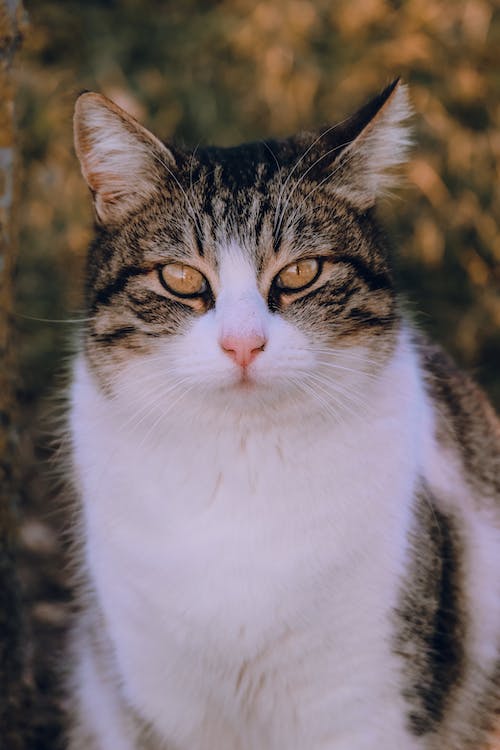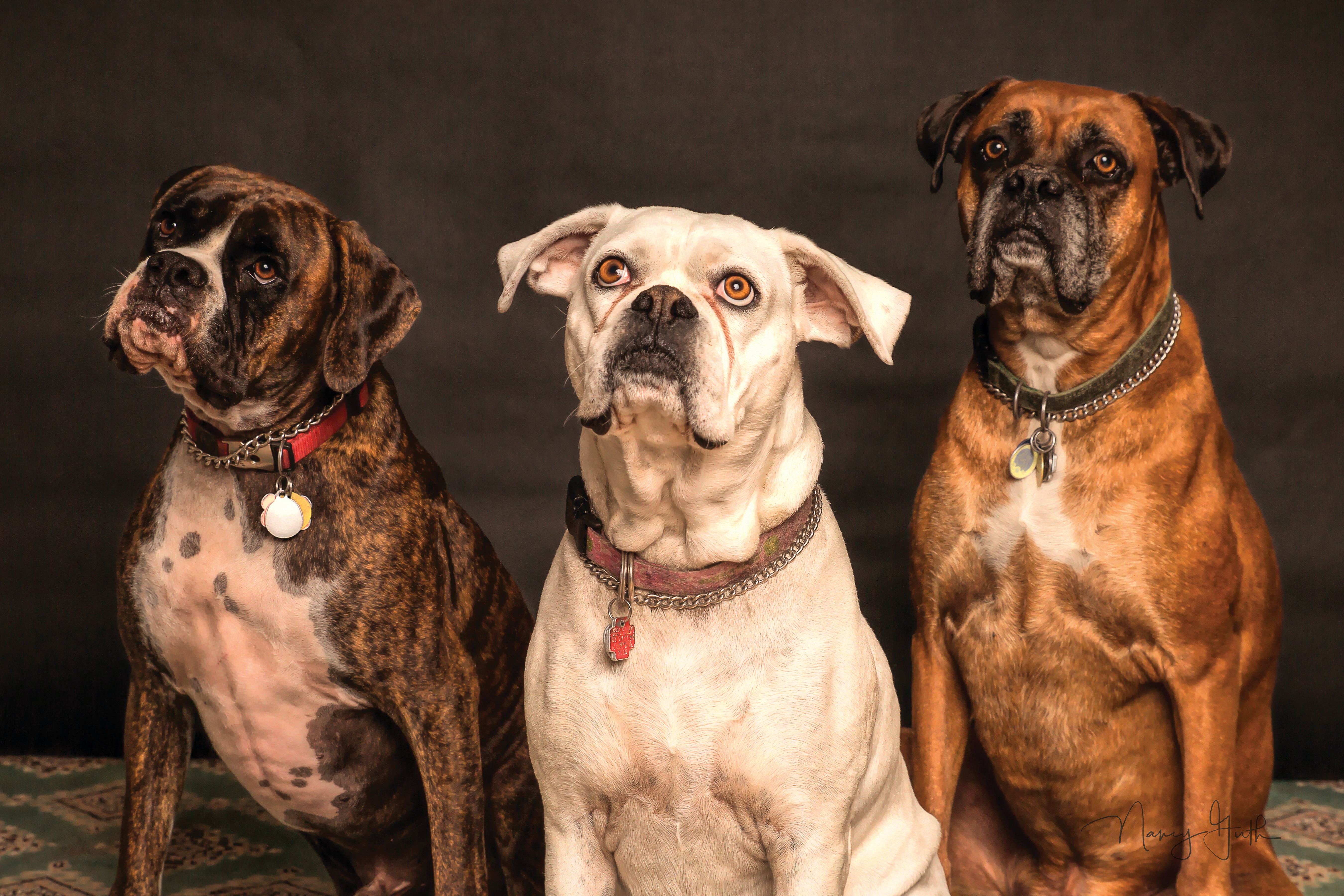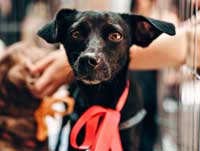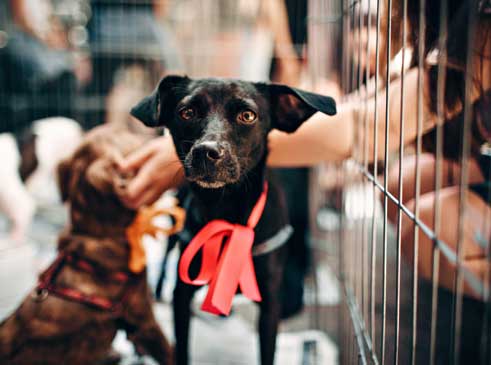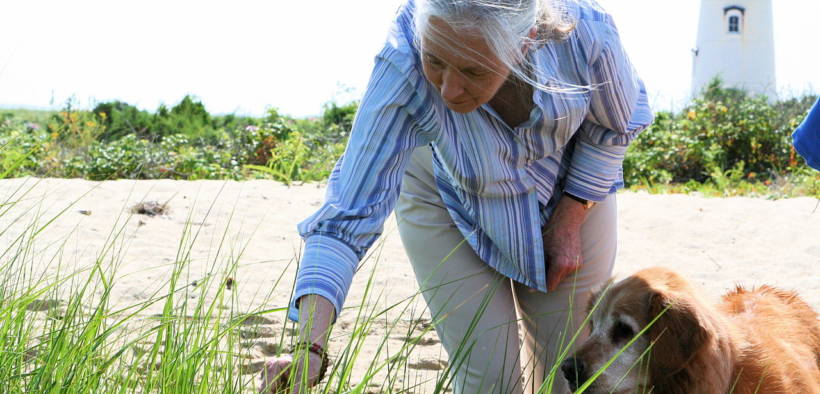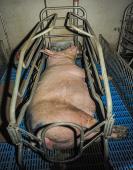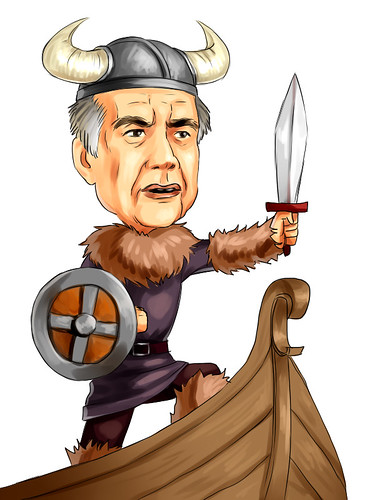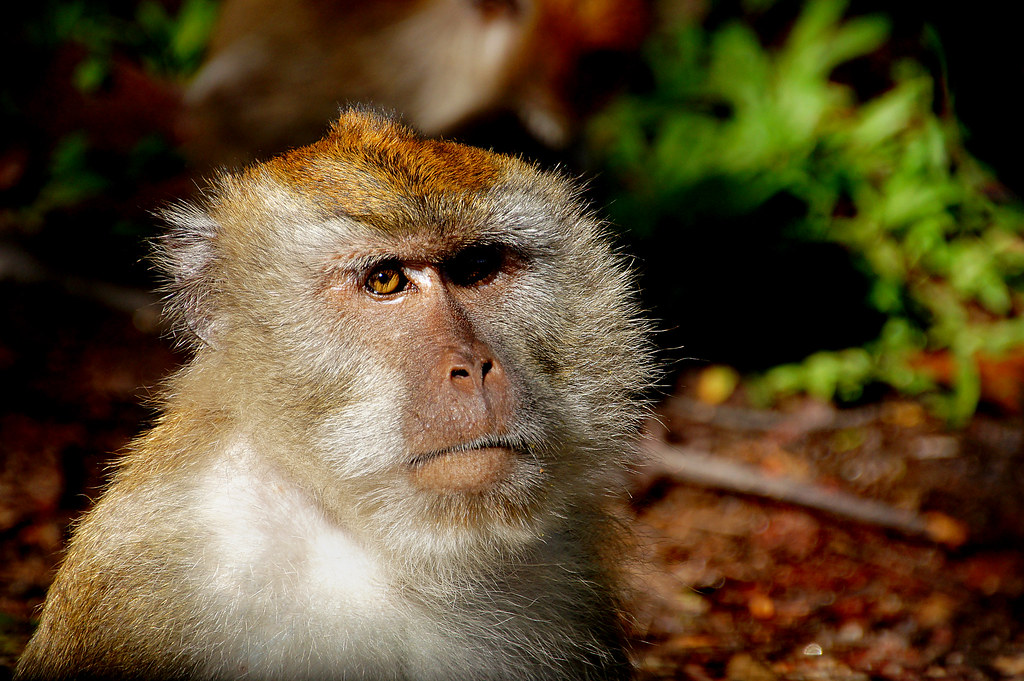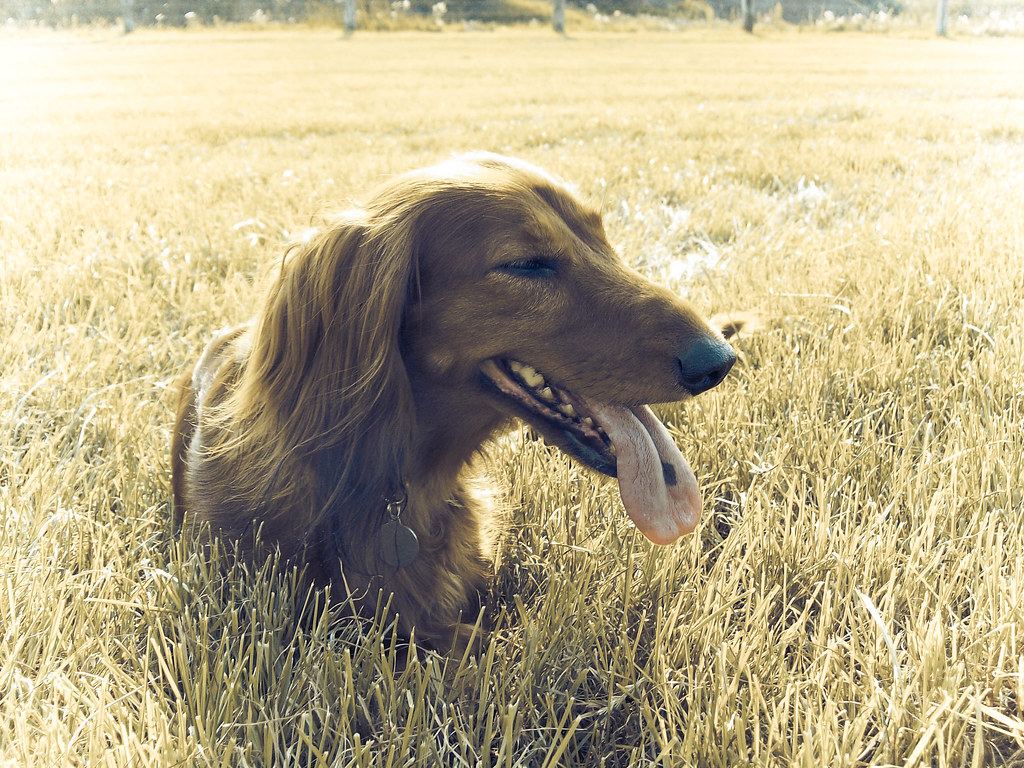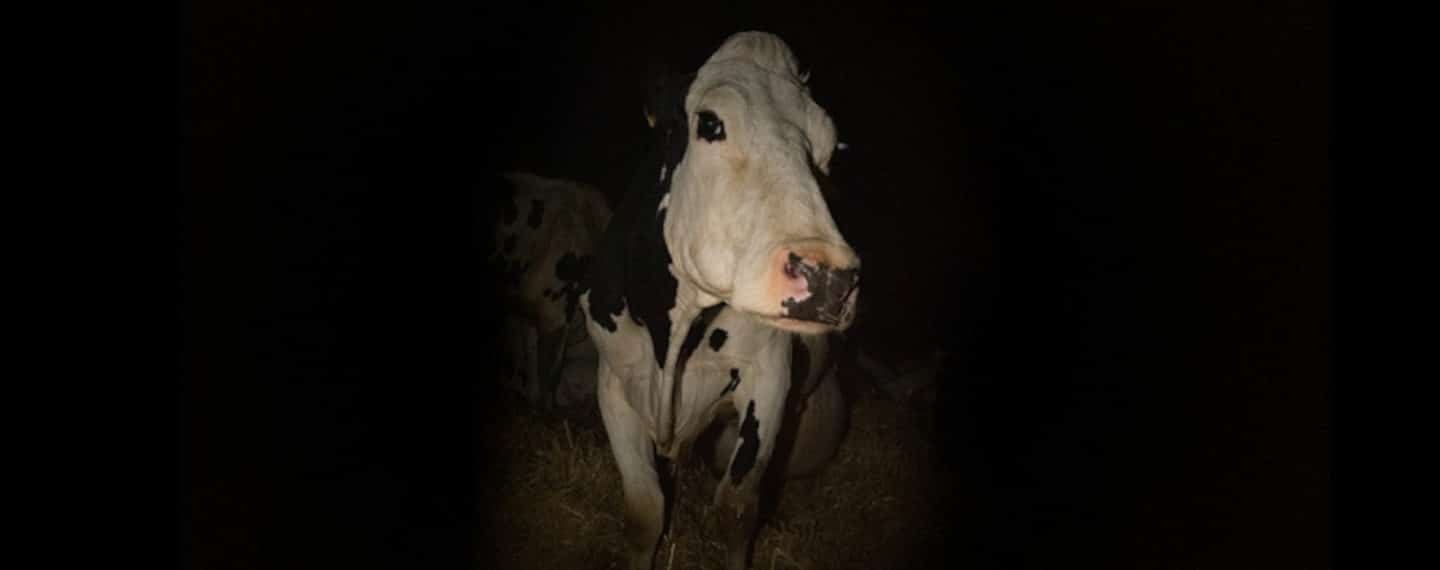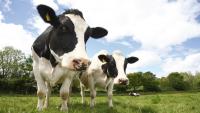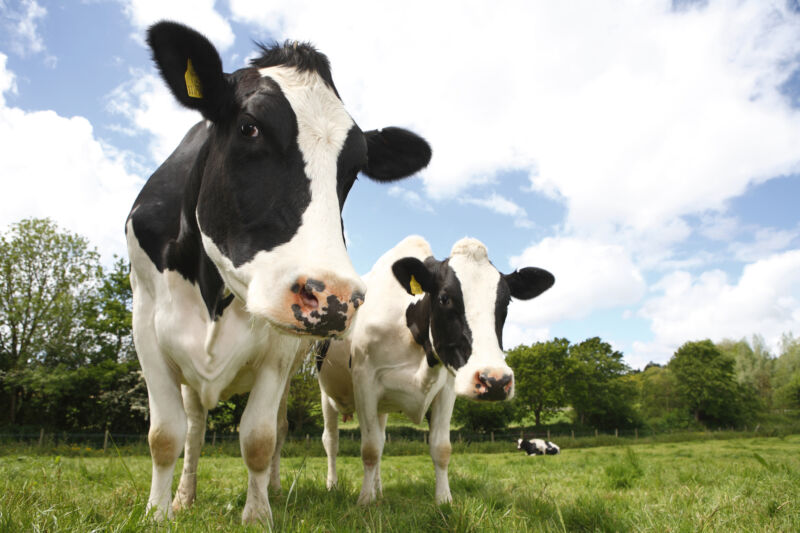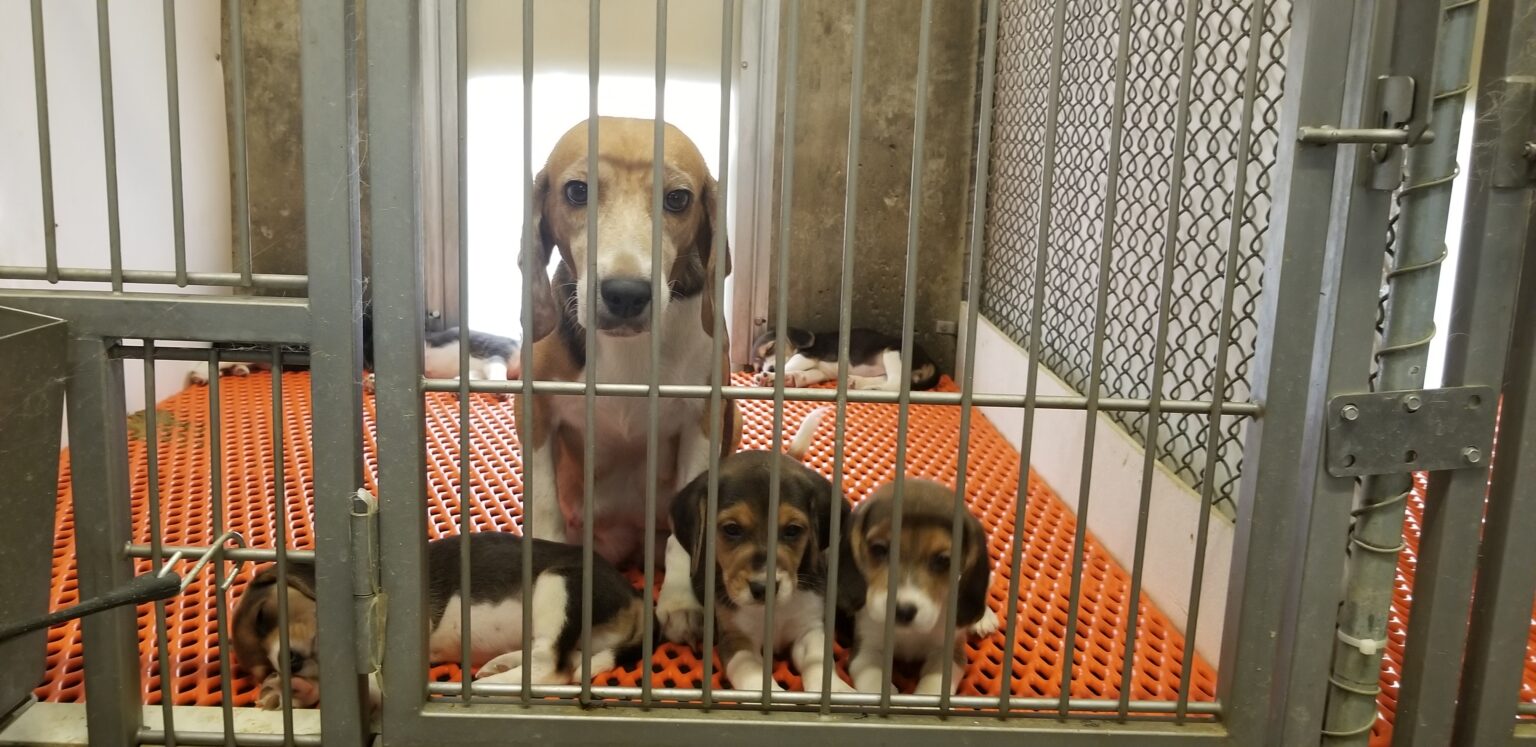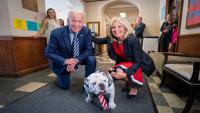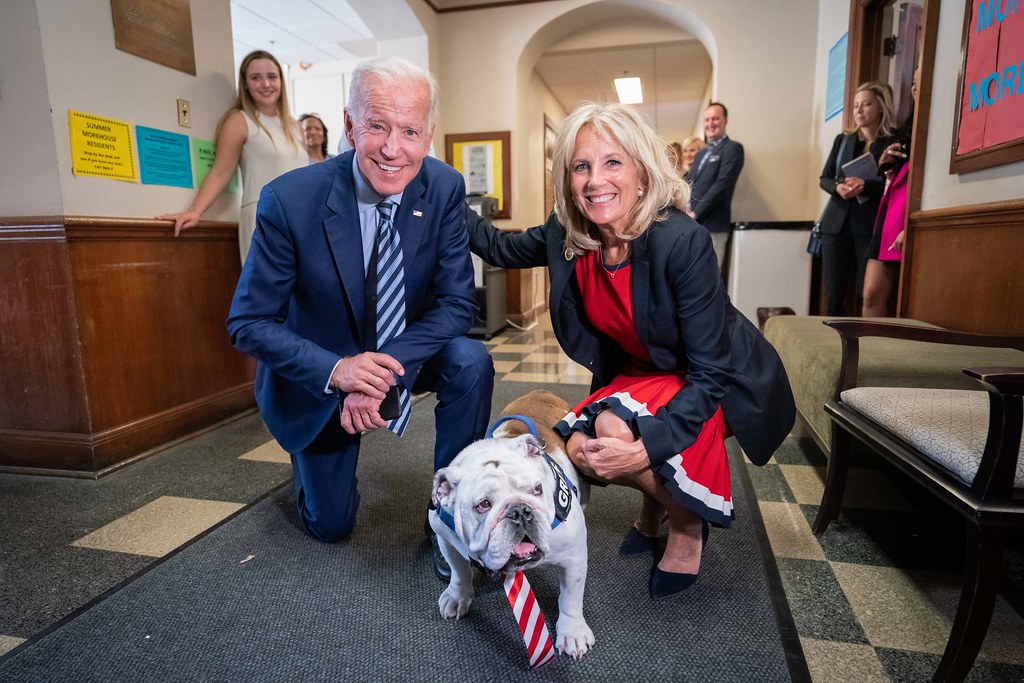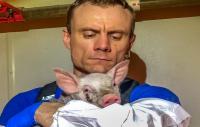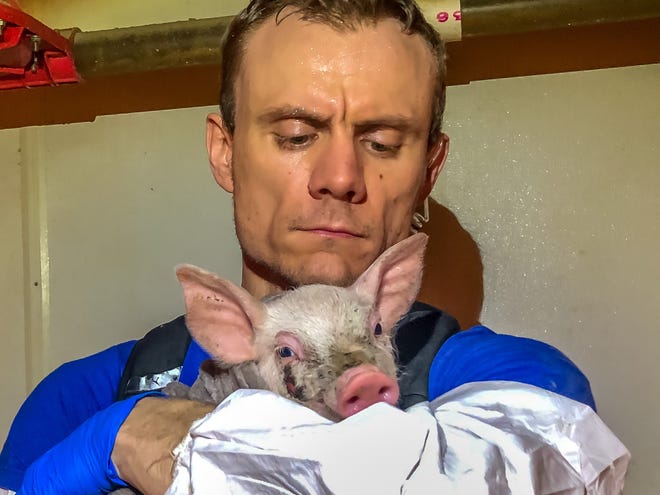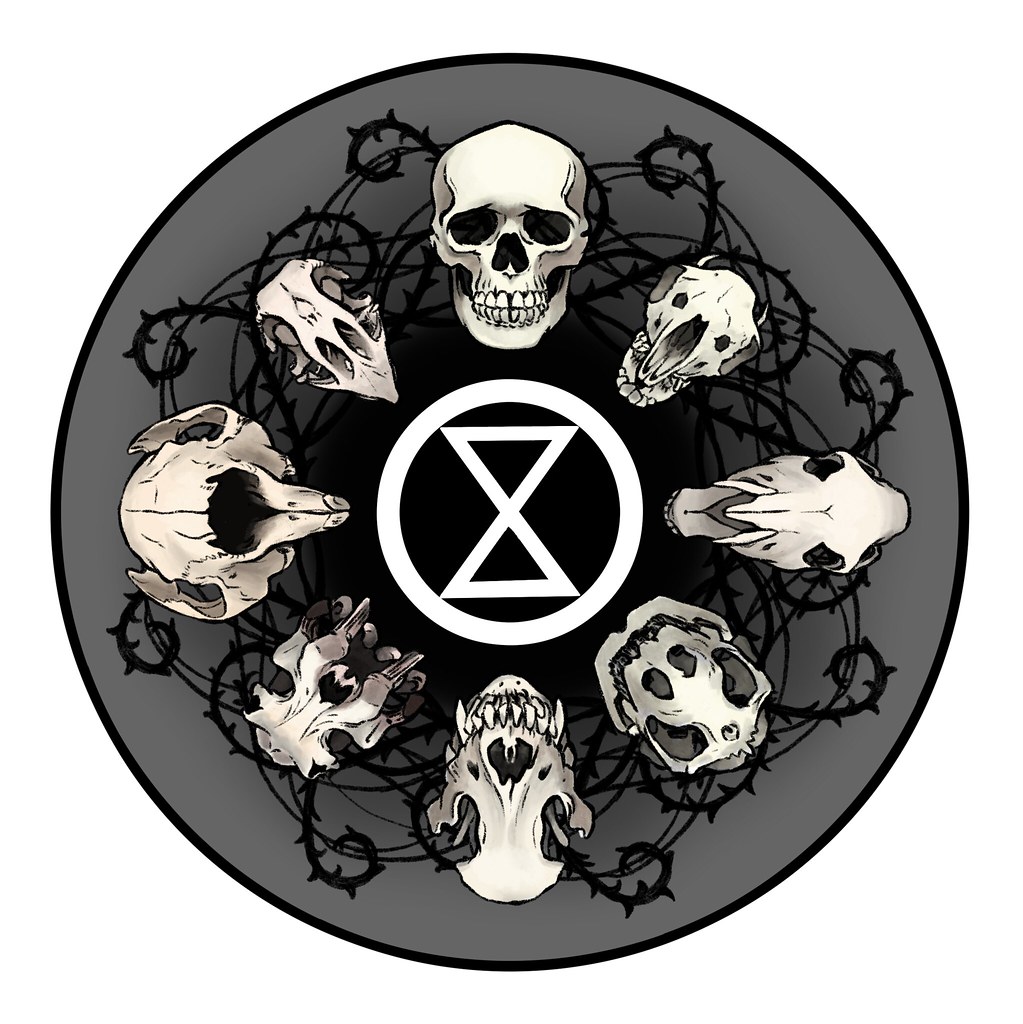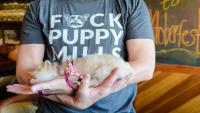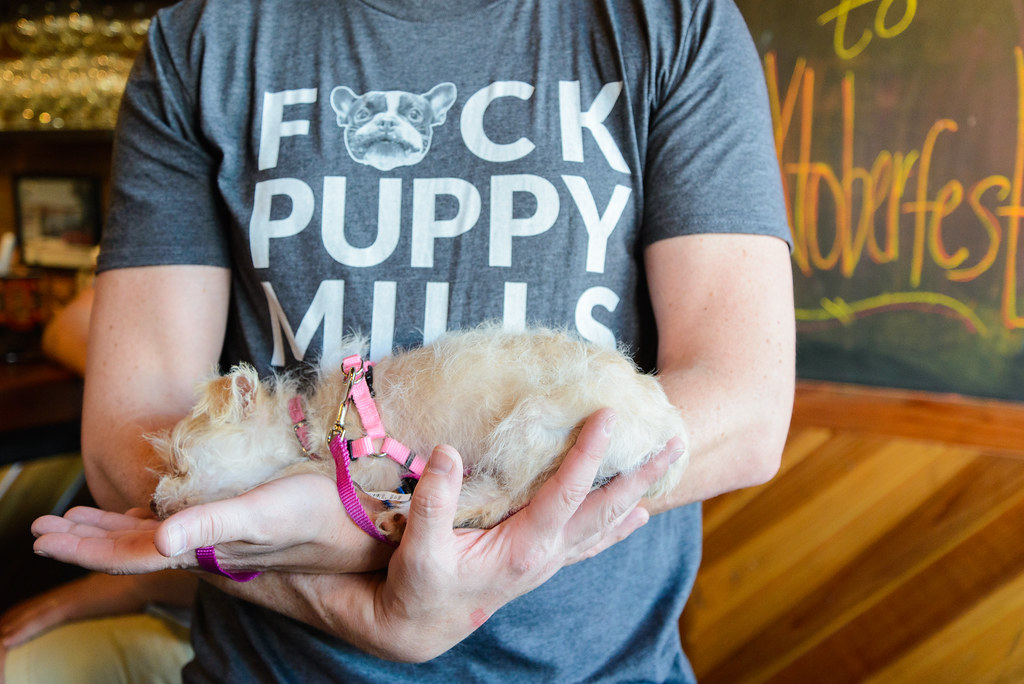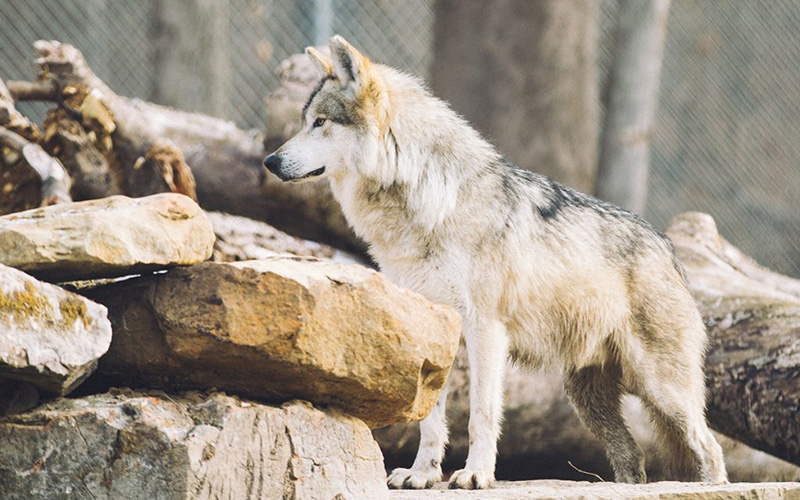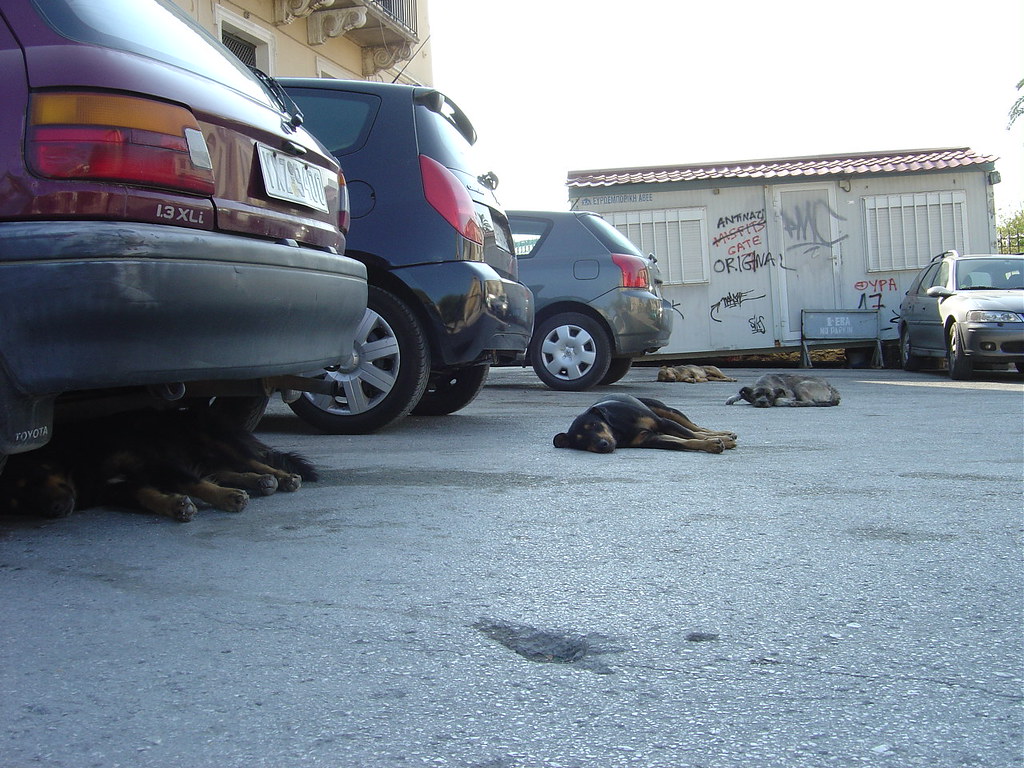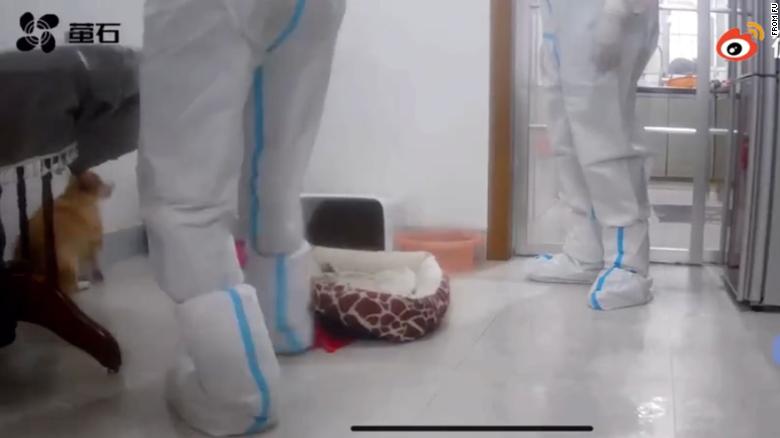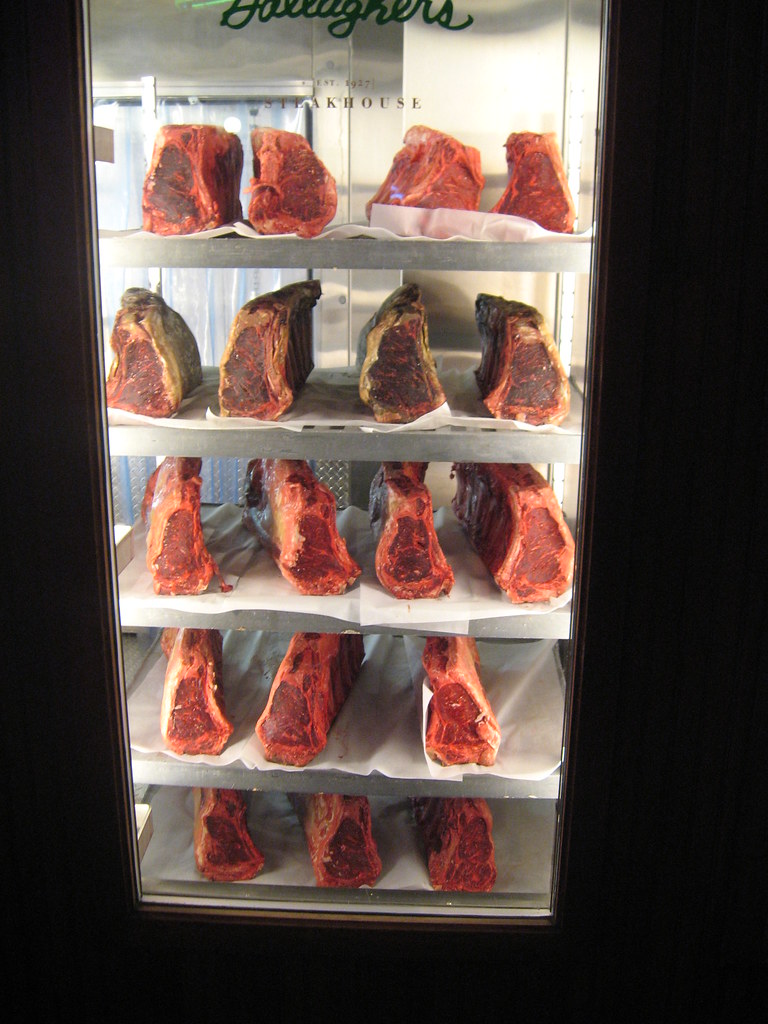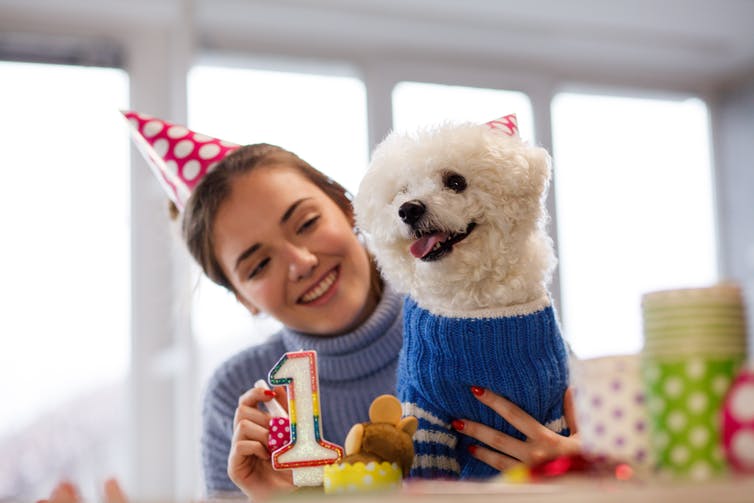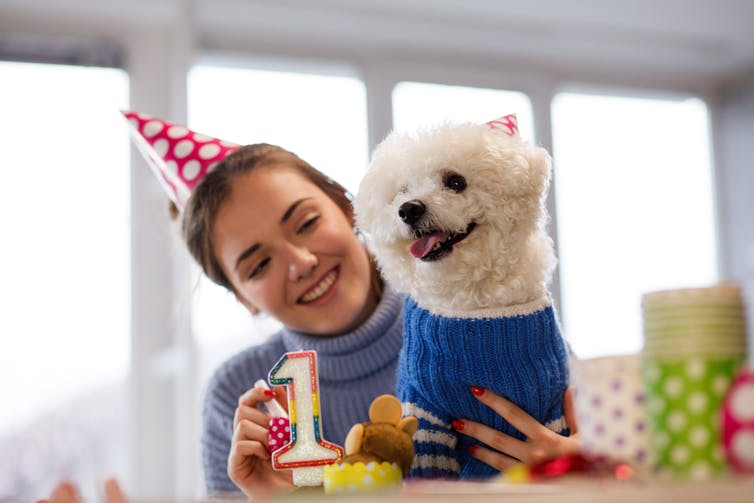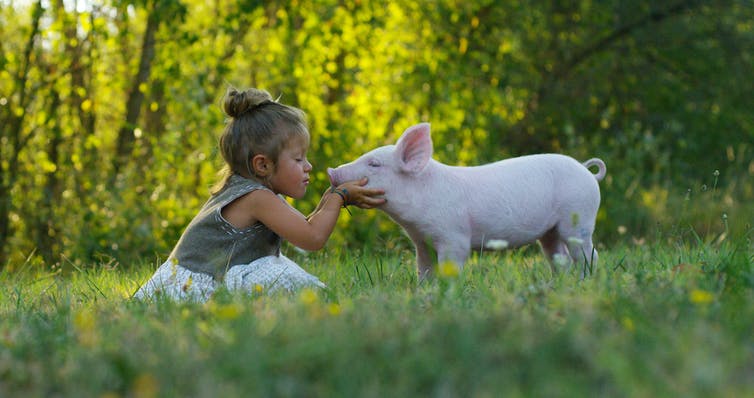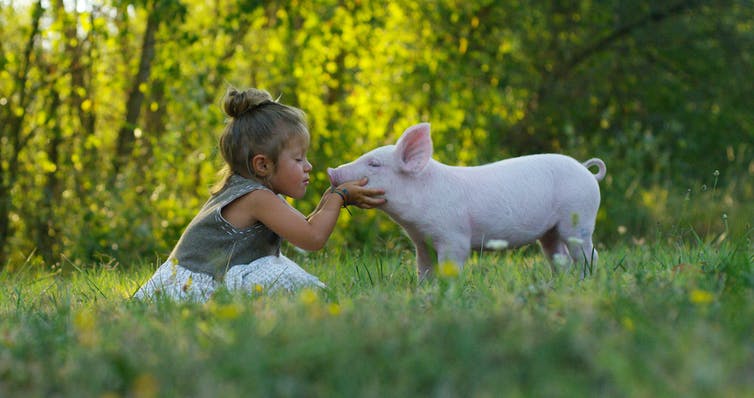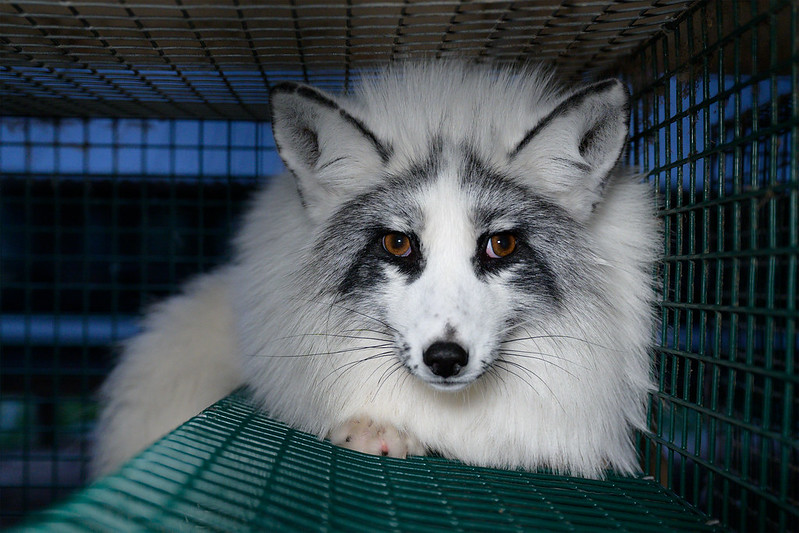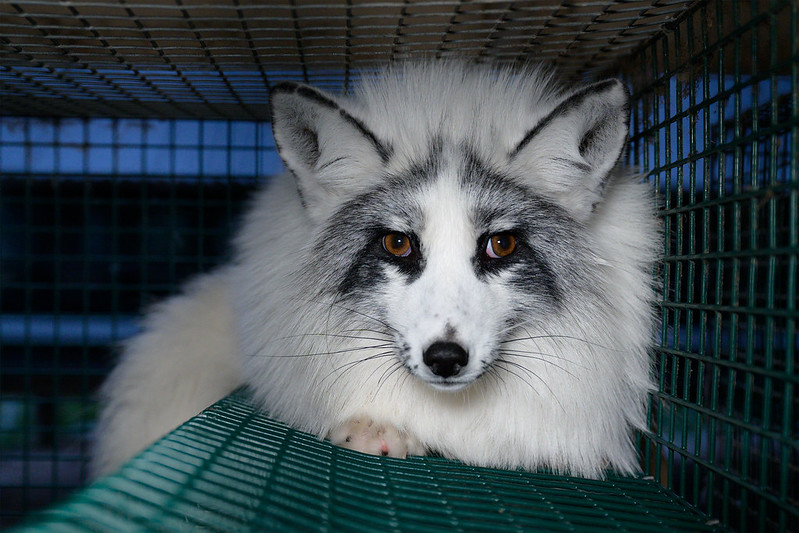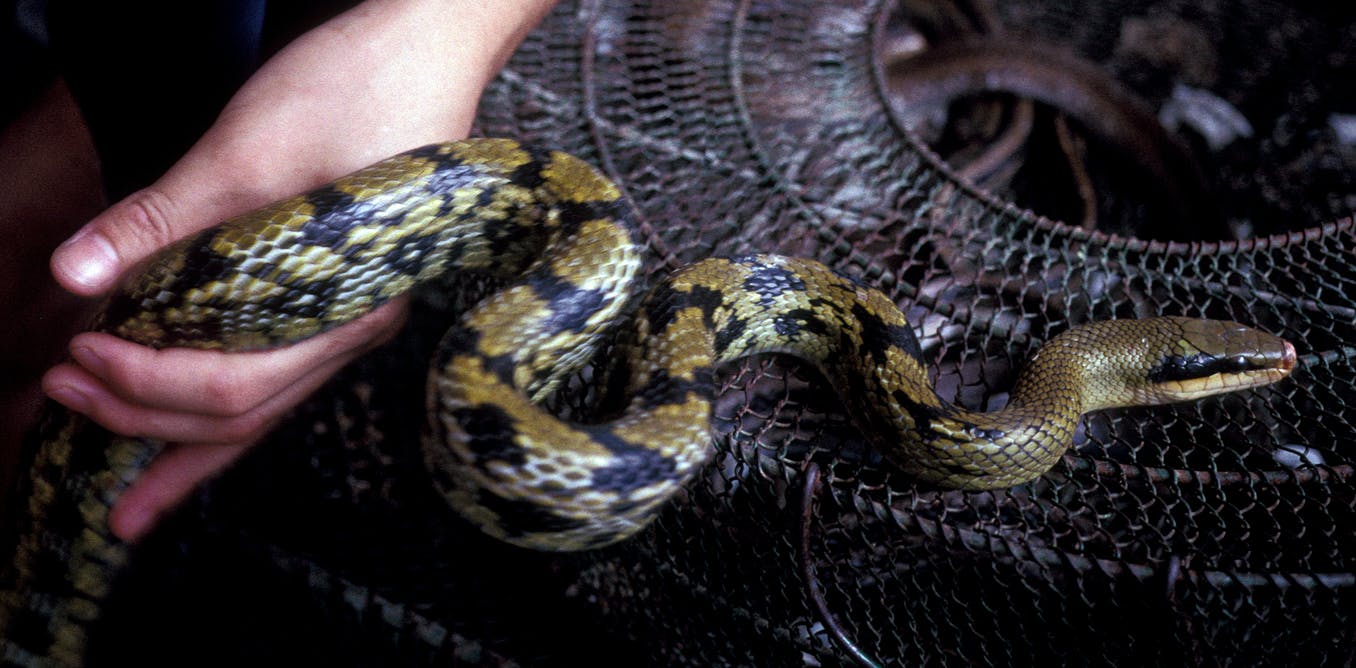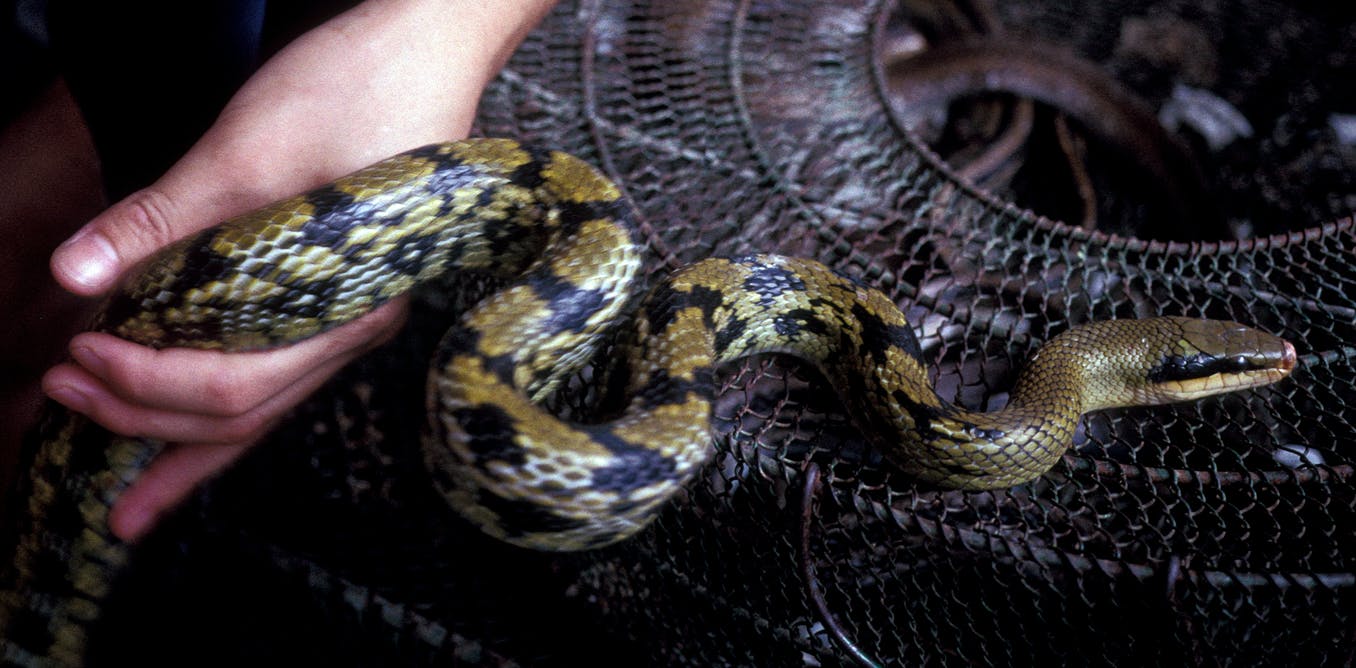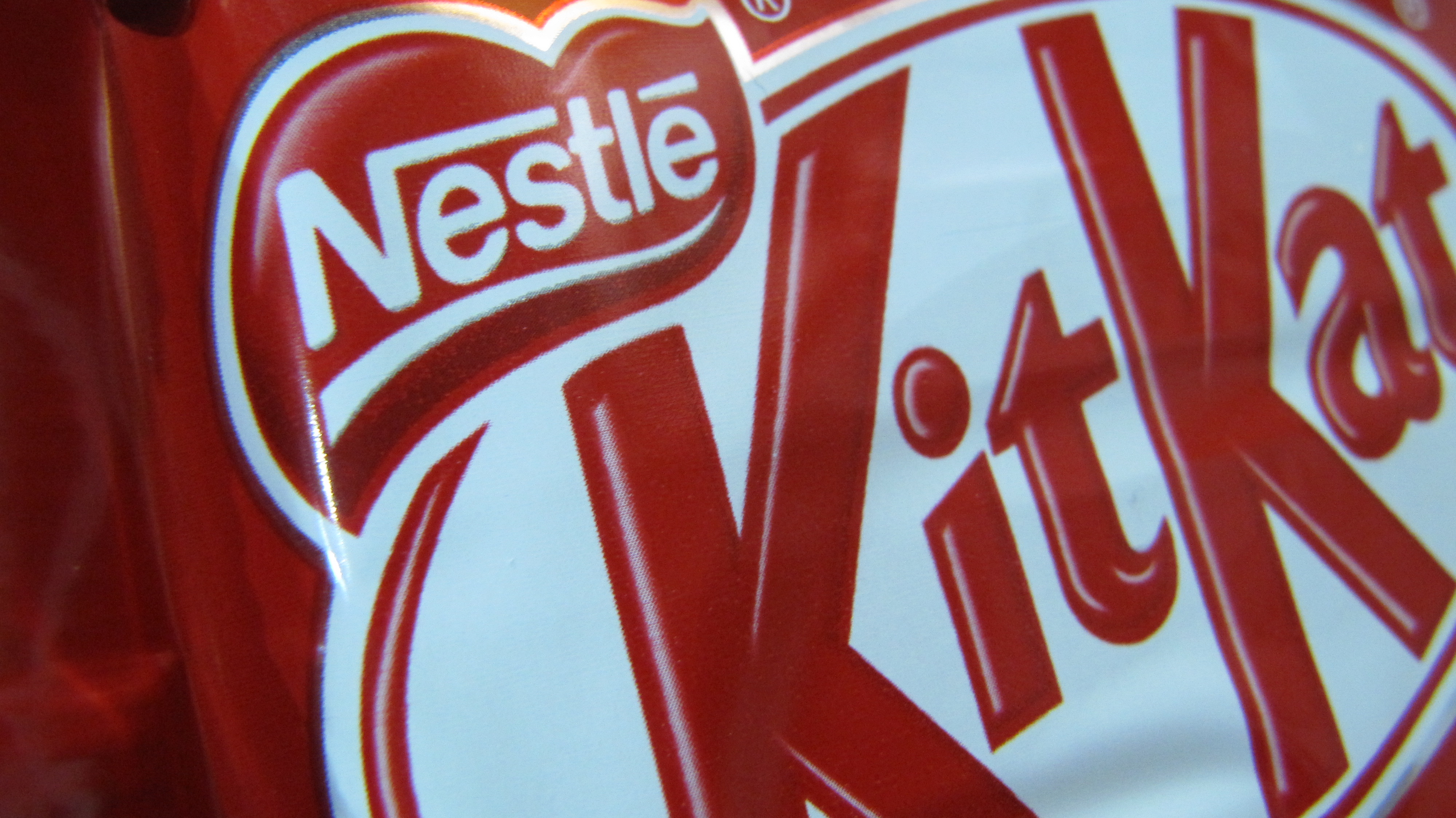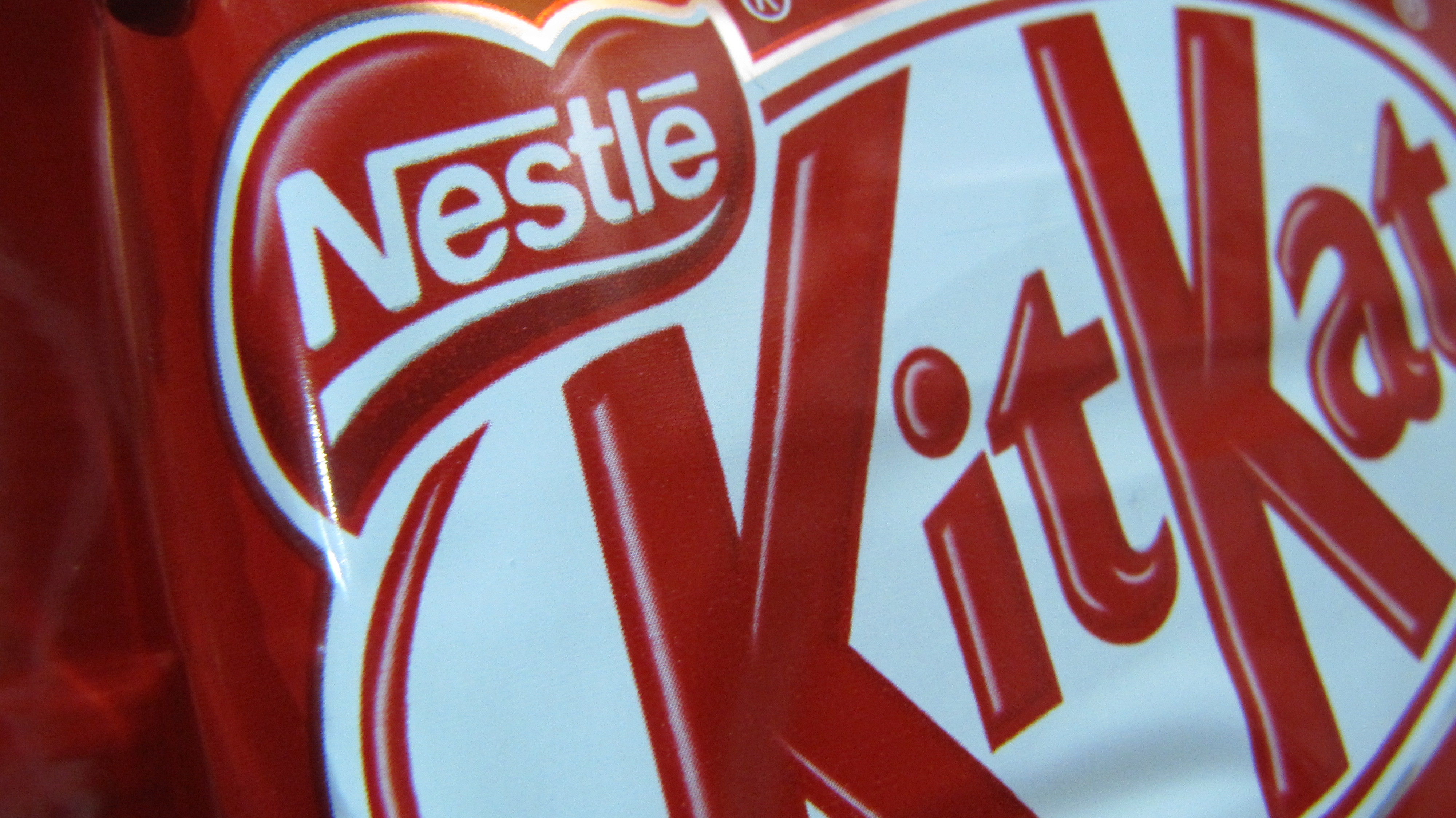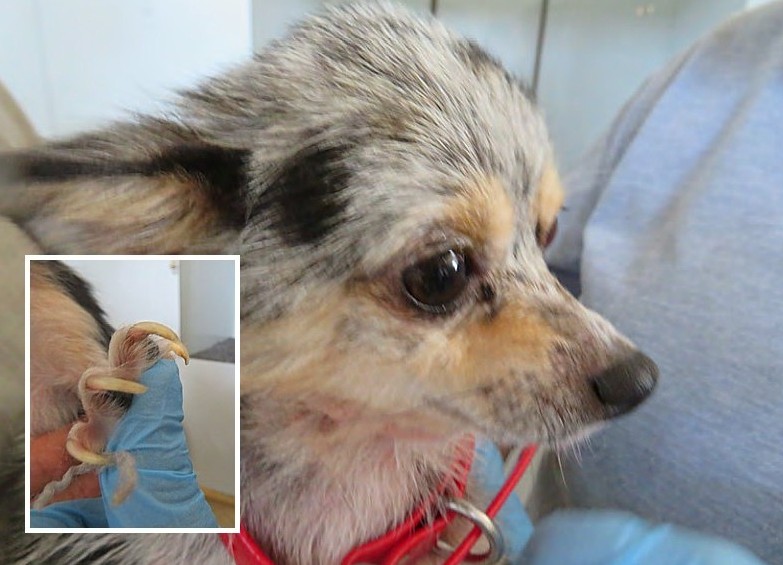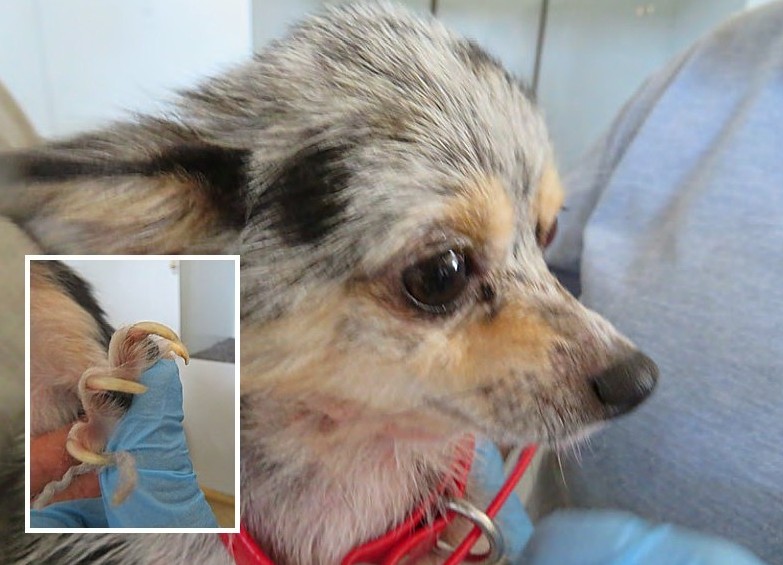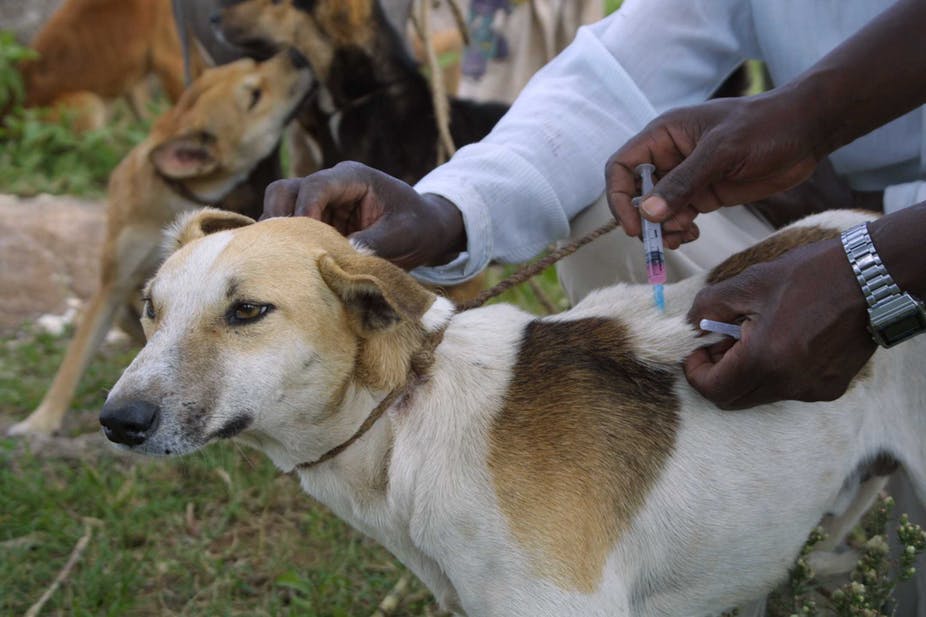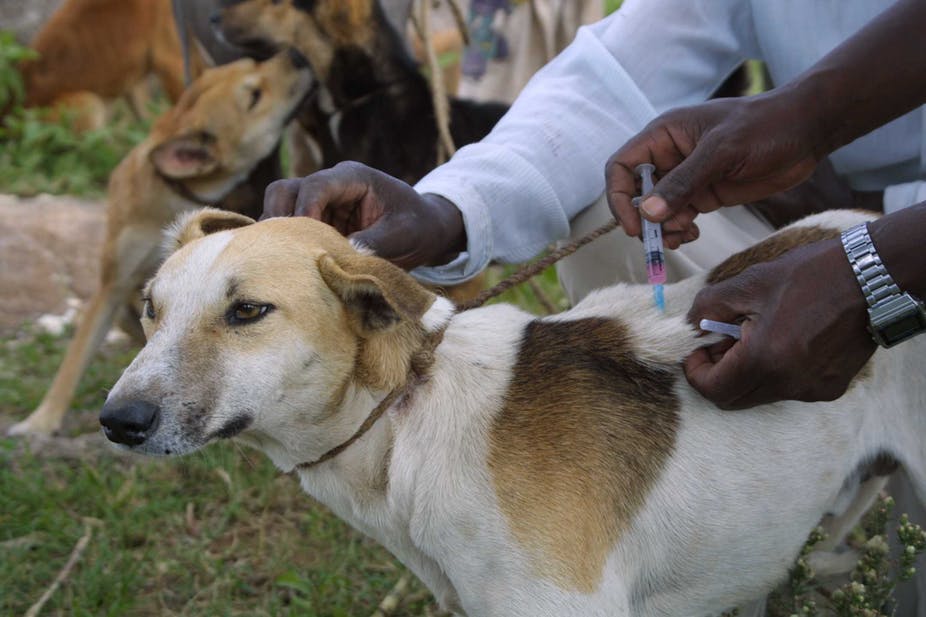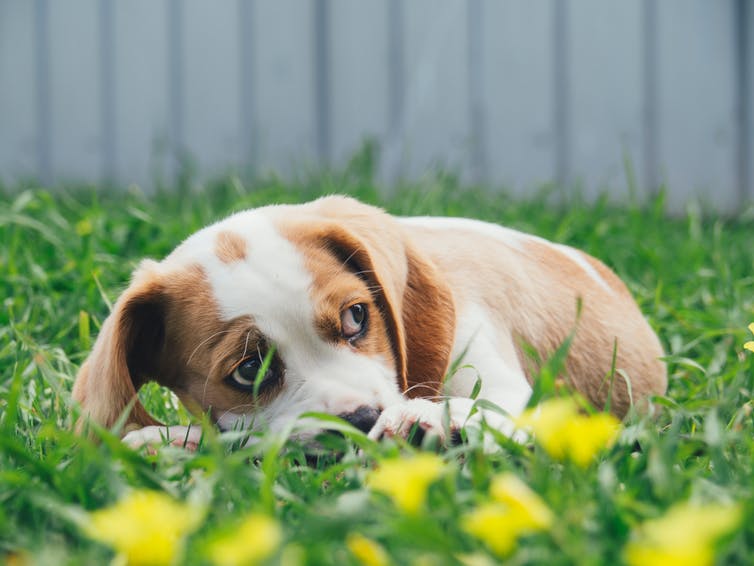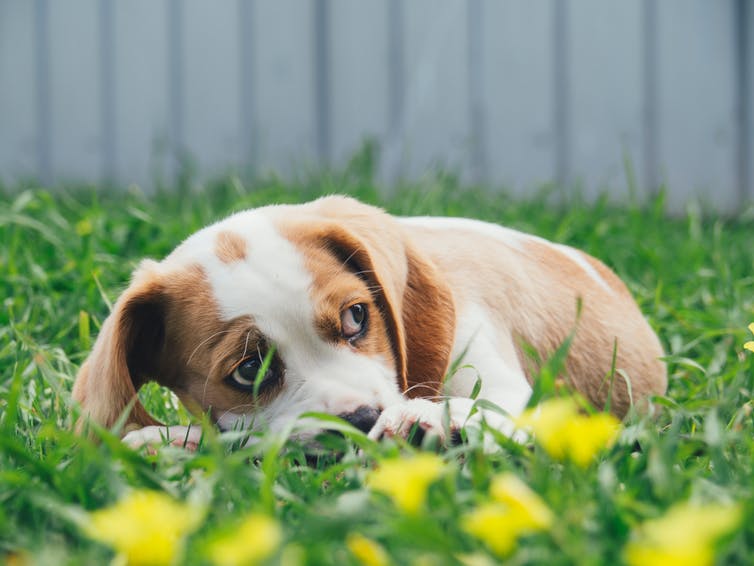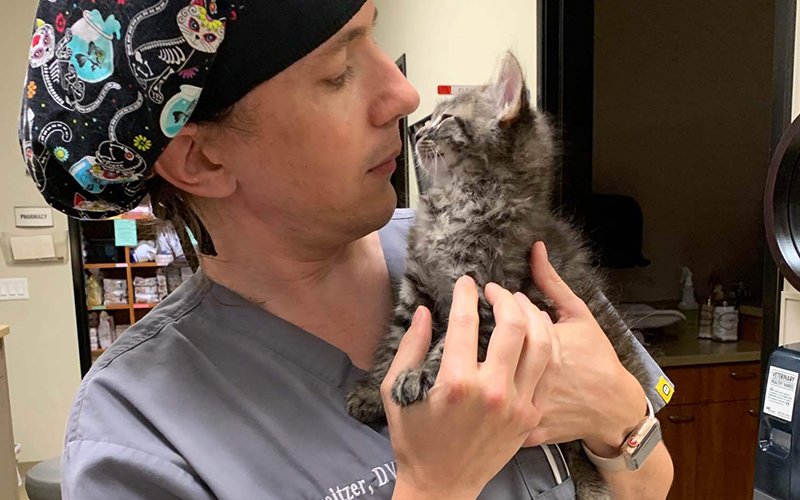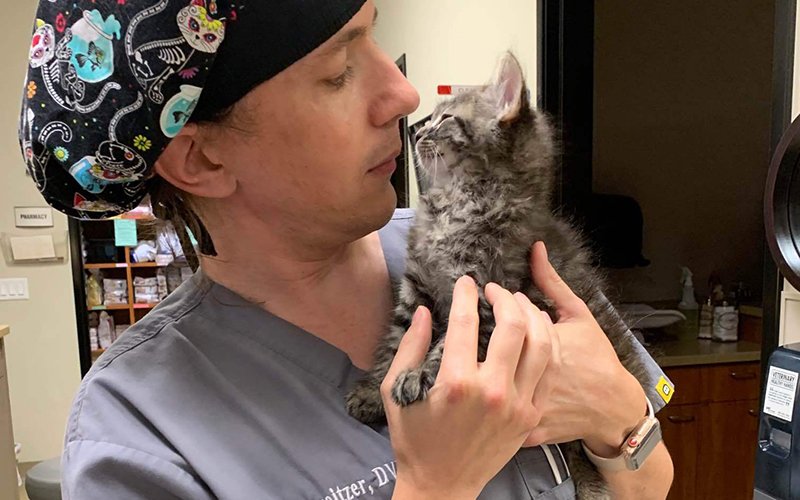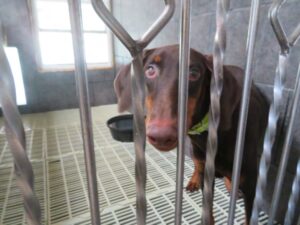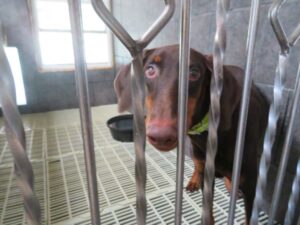
|
Brazil Bans Cosmetic Testing on Animals
Cosmetic testing on vertebrate animals is now banned in one of the most popuous countries
Public domain image of a cat by Tugce Acikyurk
In a major triumph for animal advocates worldwide, Brazil banned the use of animals in testing for cosmetics and perfumes. Agencia Brazil also reported that the ban, which took place under President Luiz Inácio Lula Da Silva’s government, also applies to products that have had their efficiency and safety previously proven. When Did This Happen?The resolution was approved in December 2022 at a National Council for the Control of Animal Experimentation (CONCEA) meeting. Luciana Santos, Brazil’s Science, Technology, and Innovation Minister, formally signed the bill into law on Feb. 28. Humane Society International (HSI), in its statement praising the ban, highlighted the ban coming to fruition after a decade of campaigning. The language for the resolution had the aid of The Brazilian Association of Personal Hygiene, Perfumery and Cosmetics Industry (BAPHPCI) and HSI. What Animals Does the Ban Include?This ban applies to vertebrate animals, such as cats, dogs, and rats, all of which have traditionally been the subjects of cosmetic and other product testing. The resolution bars animal experimentation from being used for development and quality control for cosmetics, personal care, and perfume products. This ban does not prohibit the importation of animal-tested products from other countries. Also, CONCEA lacks the legal authority to restrict marketing cosmetics that use new data from animal tests, according to HSI. What Products Does This Resolution Cover?New products without proven efficiency or safety will require alternatives to animal testing, as well as formulas currently on the market. CONCEA recognizes 40 alternative methods. Katia de Angelis, CONCEA Coordinator, is hopeful about the prospect of eliminating or drastically reducing the number of animals used in testing overall. Some of the alternatives that product developers in Brazil have used include artificial corneas and skin. Do Any Other Countries Ban Cosmetic Tests on Animals?Animal testing is banned in all European Union (EU) countries. There has been strong support for bans on cosmetic testing on animals worldwide for decades, including in the United States. In addition to the countries in the EU, other countries that prohibit animal testing include:
Although the United States lacks a federal ban, according to Harry Clarkson-Bennett, eight states in the U.S. have partial bans on animal testing for cosmetics. These states are:
How Will the Ban Impact Animal Protection Efforts?Animal advocates are hopeful that this ban will impact animal protection for the better. Carolina Mourão of the Brazilian Confederation of Animal Protection cites that this ban will save many animal lives. Many animal advocates feel that such bans help promote a more positive environment for animals overall. Brands that have disavowed animal testing, such as The Body Shop, emphasize their use of botanical products with a proven, cruelty-free track record, according to Lone Star College. Advocates who want to see such testing end hope that using alternatives will make society, in general, treat animals more humanely, as more people see that methods seen as animal exploitation are unnecessary. *** AJ Demers is a freelance content writer who also blogs at AJ the Irish Lass' Ramblings. Dogs in need of rescue are one of her passions and she networks dogs at some of the highest-intake shelters on Facebook. Living in Texas and seeing the rescue situation in the Permian Basin firsthand has helped her see what awesome people rescuers can be. AJ is a lifelong dog owner who also loves anthropology, jewelry/rosary-making, and good thriller novels. The opinions expressed are solely the author's and do not reflect the opinions and beliefs of the website or its affiliates. Giving with one hand and taking away with the other
NY authorizes killing for depressed dogs
Depressed? Photo by Engin Akyurt
There was jubilation a few weeks back in New York state as Governor Kath Hochul signed into law legislation that prevented puppy mill dogs from being imported and sold. Then with the same stroke of the pen she signed this groundbreaking law she signed S6870B, a horror show of a bill authorizing shelters to execute pets for "mental suffering". Seriously, "mental suffering" in a shelter! By definition an animal shelter is a horrid place. It's crammed with dogs and cats, the animals are in 4ft by 6ft cages, it's extremely noisy (as anyone that has visited a shelter knows well) and in general doggie hell. The new law allows shelter administrators to select which dog's to kill on any given day via an arbitrary ruling of "mental suffering". There is no definition of what constitutes such, nor is there a decision matrix or anything that administrators need to follow. They can just say "Fluffy looks very stressed today, so let's take him out of his misery and kill him". In what world does it makes sense to put a dog in a scary place and then kill them for being scared. A prison for inmates is a nasty place to call home. Almost everyone in there is impacted by the environment in some respect. And why are people in prison, as a punishment for an ill deed. Clearly most inmates experience metal suffering as a result of how and what a prison is and does. Should we just execute the ones that look most distraught? Even more concerning is that this New York state law breaks new dangerous precedent as it is the first such legislation targeting the state of mind of the animal as a casus belli in determining life or death. It is likely that many other states will now copy New York and enact similar legislation. Meanwhile no one knows just what mental suffering is, what it looks like or how to diagnose it. And who wrote this horrible law...the ASPCA of course! Established over 100 years ago this organization has become the grand daddy of animal welfare and it's word has come to define the interaction between humans and all the animals we share the Earth with. Except the organization founded 105 years ago is nothing like the one that exists today. The original folks are dead and gone, new administrators have come to power that are mostly money managers. Animal welfare is just the means by which they enrich themselves. As they say, fate gives with one had and takes away with the other. Each hard fought victory is followed by a quick defeat, but it seems most egregious when that defeat is handed to the animals by the organization most responsible for protecting them. *** Alex is a serial entrepreneur having started multiple successful businesses. After a career in marketing with Fortune 50 companies he entered the world of the Internet in 1999. In 2005 he adopted the cause of the animals as his own. A prolific writer he has been seen and quoted on Good Morning America, The Today Show, CNN, People magazine amongst many others. He currently serves as the President of The Buddy Fund. The opinions expressed are solely the author's and do not reflect the opinions and beliefs of the website or its affiliates. New York Outlaws Puppy Mill Dogs
Dramatic step for a huge pet shop state
Hurray!
Last week, New York's Governor Hochul of New York State signed into law a bill to end the puppy mill pipeline! This groundbreaking legislation curtails the retail sale of dogs, cats and rabbits in New York pet stores. The bill was passed by the NY Senate and Assembly in the summer, however the governor dilly dallied for weeks and months on end. All involved in animal care were up in fear that she was intending to veto thus the interminable delay. Tremendous pressure was brought on Hochul by the activist community while pet shop owners put on her their own kind of vice. Hochul, not being known for an animal activist, everyone was waiting for the grim news, and then suddenly the Christmas spirit took a hold of Hochuls soul. We are grateful to the bill's sponsors, Assembly member Linda B. Rosenthal and Senate Deputy Majority Leader Michael Gianaris. New York is one of the puppy mill industry’s largest markets, with dogs being trucked in from puppy mills across the country. The mill breeders, transporters and pet store owners who profit from pet sales in New York lobbied hard to stop the bill from being signed. We applaud Governor Hochul for doing the right thing for pets and New Yorkers by signing this bill into law. Thank you to all of the animal advocates and supporters for speaking up against the cruel puppy mill industry and helping shut down the puppy mill pipeline into New York State! All New Yorkers deserve to be proud of this historic victory for animals. Hopefully it encourages other states to follow suit. *** Alex is a serial entrepreneur having started multiple successful businesses. After a career in marketing with Fortune 50 companies he entered the world of the Internet in 1999. In 2005 he adopted the cause of the animals as his own. A prolific writer he has been seen and quoted on Good Morning America, The Today Show, CNN, People magazine amongst many others. He currently serves as the President of The Buddy Fund. The opinions expressed are solely the author's and do not reflect the opinions and beliefs of the website or its affiliates. What We Get Right - and Wrong - About Crossposting
Can we move beyond crossposting as a primary way of helping that easily?
A dog - eager for your home?
Eight years ago, blogger Heather Clarkson authored an article reprinted on Petful that perfectly highlighted some of the pitfalls of networking on social media. I'd urge anyone who shares animals in need, even occasionally, to check it out. I think it's just as timely in 2022 as it was in 2014. One Crossposter/Networker's Journey I'll start with an important caveat: my presence on Facebook isn't completely confined to crossposting/networking. It's an excellent way to stay in touch with friends and family. There are groups people have started for virtually everything you can imagine. You can also do things to reach a business customer base easily. One of the things I found helpful early on was joining groups and liking/following pages for rescue crossposting. None of us will succeed in saving every death-row dog out there. However, networking on social media helps give them somewhat of a chance. Somewhere along the way, I started one page that led to several others geared toward rescue crossposting. However, going this route is not without pitfalls:
What, then, can we do? I think it’s time to change the narrative so that more people see crossposting as an important PART of the solution instead of the ENTIRETY of the solution. Crossposting on Social Media Has Limitations
Regardless of whether you crosspost using a personal profile or groups, or pages on Facebook, there are some limitations. Here are some of the biggest to consider. Posting Restrictions Can Be a Drag People who crosspost often get tagged on multiple posts a day or receive messages about multiple death row pets on a daily basis. In many cases, you can only share the same posts with so many groups before your account gets restricted (i.e., “FB Jail”). When you land yourself in FB Jail, you’re not going to be able to keep sharing without risking having your account restrictions extended further. Even FB group admins or page owners are not completely exempt from being “jailed.” What it boils down to is even if you’re a group or page admin, you don’t own the infrastructure where everything is hosted. Unless the powers that be change their algorithms to stop treating rescue crossposts as spam, this is going to be a continual issue. Unhelpful Comments Sometimes it seems like every legitimate help offer or suggestion ends up being counterbalanced with comments that cause a lot of needless drama. It would help if those who are commenting only to say they can’t do anything would keep it to themselves, or those who want to flame the pound workers would give it a rest. However, even addressing these types of comments can cause further drama and malcontent. It takes away from the legitimate efforts to help these animals and makes it harder for volunteers to sort through real helpful offers. What it boils down to is that the people who work in high-kill facilities aren’t the ones who are usually reading the comments begging them to “stop the killing/stop murdering animals,” etc. These types of comments only clutter up the threads and make it harder for rescue volunteers who have no involvement with the killing decisions to find out who’s really trying to help. Also, a helpful hint: there are people who won’t use any type of social media site or will only use one platform. These Internet users shouldn’t be “exiled” from helping because they opt not to get involved with social media. People Legitimately Interested in Helping Need to Spring Into Action People legitimately interested in helping, instead of inciting drama, would do well to educate themselves on the reasons shelters kill often-healthy, adoptable animals. In short, these “reasons” are the product of a system that is not intended for adoption in the first place, and legislative action is necessary to change things so that municipal shelters go from impound facilities that are permitted to “dispose” of unclaimed animals in lethal ways to city/county-run shelters focused on adoption for unclaimed animals. To see these “kill” facilities transform into adoption facilities, there needs to be more community involvement and support for rescues that step in to “pull” the animals to safety. Pound Animals Need More Exposure Pound animals need to be highlighted across all social media platforms, not just FB. A bonus that would be particularly helpful would be if the cities or counties that run municipal facilities had listings on business social networking sites like LinkedIn or Alignable. Crossposters could help increase the chances of animals getting rescued by reaching out to rescues themselves to make them aware of animals they can pull. One thing that may help is if crossposters that contact rescues offer to help in some way they legitimately can, like transporting, fostering, or helping to raise funds. If you’re a writer with journalism experience, find sites to write for that would allow you to cover local animal rescue issues. You may also want to alert local reporters to issues going on at your pound or in rescues that require attention. Rescues Need Funds A common, wrong assumption is that pledges are a type of ransom paid to municipal shelters to prevent an animal from being killed. This idea is not only incorrect but is hurtful to rescue efforts when too many people believe it. Pledges are for no-kill rescues who might pull the animal, NOT for the pounds, which are government-funded and do not receive donations. Well-intentioned but misinformed people who proclaim that they won’t support kill shelters by refusing to help fund rescues are, in fact, only hurting the animals. Pledges paid to rescues help provide often-needed funds to provide initial vetting and other care. No organization has unlimited funds at its disposal, so every bit of funding raised helps. Rescues Need Fosters and Other Volunteers Rescues, rather than operating shelters, require fosters to provide temporary homes for animals in their care. A foster can make all the difference in whether an animal gets out of the pound alive. Transporters can also help when animals are pulled by out-of-area rescues. One of the helpful things about volunteering to provide transportation is that you can transport the animal all the way to the destination or take a “leg” of the trip as part of a group effort. Rescues can also use volunteers at adoption events. Every role that a volunteer plays is vital in getting municipal shelter animals to safety. As influential as crossposting can be in saving animals’ lives, we can and must do better. If we realize that crossposting is one part of the solution, not an entire solution in and of itself, we may save more lives than ever before. *** AJ Demers is a freelance content writer who also blogs at AJ the Irish Lass' Ramblings. Dogs in need of rescue are one of her passions and she networks dogs at some of the highest-intake shelters on Facebook. Living in Texas and seeing the rescue situation in the Permian Basin firsthand has helped her see what awesome people rescuers can be. AJ is a lifelong dog owner who also loves anthropology, jewelry/rosary-making, and good thriller novels. The opinions expressed are solely the author's and do not reflect the opinions and beliefs of the website or its affiliates. Midland-Area Rescue Needs Fosters to Save More Big Dogs
A faithful few can make a big difference
Three big dogs looking up
Dog Rescue R Us, a Gardendale, Texas-based dog rescue, recently had to close its intake to medium and large dogs, only being able to take in small breeds due to a lack of fosters. A sufficient number of fosters willing to care for dogs of all sizes is crucial for rescues to continue their essential work. In the Midland/Odessa, Texas area where Dog Rescue R Us (DDRU) is based, the municipal, city-funded pounds often put down a high number of otherwise adoptable animals. Odessa Animal Control put down over 3,000 animals in a recent year-year period. DDRU has saved over 5,000 dogs since its founding in June 2019. Partnerships with organizations like Dog is my Co-pilot have made it possible to fly dogs from Odessa, TX, to other cities like Seattle and Montreal for placement. However, not all homeless animals will get out on one of these rescue flights. Organizations like DDRU strive to take in as many homeless animals as possible before they are relinquished to animal control facilities. However, rescues must rely on fosters to make this a reality. What Role Do Fosters Play in Rescue?Fosters play a crucial role in dog rescue. Yet, many are unaware of what fostering is and how it makes a difference in what rescues do. A common misconception is that fostering is the same as adoption. Unlike adopting, fostering is not a commitment to keep the dog or animal for the rest of its life. Fostering provides a dog with a temporary home until they get an adopter. Dogs kept in a home before adoption are likely happier than dogs in a shelter or boarding setting. These dogs will have better social skills and an increased chance of being adopted into a permanent home. Every rescue has different criteria that they use for fosters. However, some of the most common are ensuring renters have permission to keep pets in their homes and a willingness to take the dog to vet visits and adoption events. Donations that rescues receive help pay for the veterinary costs, food, and other everyday expenses, requiring the foster only to provide a temporary home. Sometimes fostering involves keeping the dog for a few months, and sometimes it’s for a few weeks until a rescue transport is arranged. In many cases, foster families pleased with a dog they have cared for have the option of adopting so the dog can live with them permanently. Why Permian Basin Rescues Need FostersWith much of the economy built on the oil business with boom-and-bust cycles in the Basin, which includes Midland, Odessa, and the surrounding areas, many of the residents with pets only remain in the area on a shorter-term basis. Many of the owner-surrendered pets that end up in local pounds belonged to people who relocated and declined to take their pets with them or under various other circumstances. Regardless of why the pets were surrendered, owner-surrendered animals are not subject to a holding period as strays are and might end up being put down before any of the strays. Having more fosters allows rescues to pull these animals likely to be killed first. If fostering is something that interests you, you’ll find foster applications on DRRU’s website. Even if you’re undecided on fostering, volunteers are always needed at area rescues. *** AJ Demers is a freelance content writer who also blogs at AJ the Irish Lass' Ramblings. Dogs in need of rescue are one of her passions and she networks dogs at some of the highest-intake shelters on Facebook. Living in Texas and seeing the rescue situation in the Permian Basin firsthand has helped her see what awesome people rescuers can be. AJ is a lifelong dog owner who also loves anthropology, jewelry/rosary-making, and good thriller novels. The opinions expressed are solely the author's and do not reflect the opinions and beliefs of the website or its affiliates. Can Mandatory Spay/Neuter Become Reality in Texas?
An ambitious petition launched on MoveOn.org aims to make that happen
Two Golden Retriever puppies
Texas has the highest number of animals put down in municipal pounds, a staggering 125,000 yearly according to PetPedia. Several factors have led to this situation, including the state's population size, many Texans having jobs that require frequent moves, such as oilfield workers, high rent prices in many cities that make finding pet-friendly options difficult, and high spay and neuter costs that help contribute to the homeless animal population. A recent petition on MoveOn.org addressed to the Texas Agriculture Board aims to bring about a mandatory spay and neuter law for dogs and cats. More Texas residents, as well as interested rescuers outside the state, who are aware of the situation, may be able to help make a difference. Texas Rescues Are Maxed Out Every municipal pound, also known as an animal control facility, has a certain maximum capacity level set by city or county authorities. At the same time, these facilities are obligated to accept every dog or cat. Unlike the non-profit shelters that can close to intake when nearing capacity, municipal pounds are legally permitted to have animals put to sleep if they've passed their stray hold and have not been claimed by the owners or adopted. No-kill rescues inside and outside the state have taken up the task of pulling as many of these animals from animal control facilities as possible. However, these rescue efforts require fosters willing to hold the animals temporarily until placement, as well as transporters. These efforts require a lot of volunteers, time, and money to make everything work effectively. What Mandatory Spay or Neuter Could Do Many cite requiring all pet dogs and cats to be spayed or neutered as a possible solution. Members of the rescue community frequently see pounds filling up with puppies or kittens from unintended litters. In some parts of the state with severely underserved animal control facilities, large numbers of strays roam freely, producing multiple litters of offspring. Rescue advocates who support mandatory spaying or neutering hope that preventing further litters will reduce the number of animals destroyed in shelters every year. Another advantage that rescue advocates see with required spaying or neutering is rescues having more resources available because they need to care for fewer animals. Overcoming Possible Objections However, such an effort will not be without opposition. Breeders are likely to oppose such laws unless carefully-worded exemptions are available for professional breeders. Another concern would also involve the need for exemptions for pets with health issues that make surgery unsafe. Required spays and neuters would require more veterinarians making their services affordable. Vouchers offered by non-profit organizations promoting spaying and neutering can help increase affordability. One concern often cited by advocates is transportation, with affordable mobile spay and neuter clinics being a possible solution. How Would Such a Law Pass in Texas? Many would consider a statewide law to be the best option, despite previous attempts at statewide laws having failed. The state legislative process is somewhat long, with the Legislature only meeting every two years. In any case, city or county-wide ordinances could be easier goals to achieve. Anyone interested in getting a spay and neuter ordinance passed in their community is often advised to work with local groups advocating for pound animals. These groups made up of rescue advocates and other concerned citizens can help make a stronger case for city council members and county commissioners to take action. *** AJ Demers is a freelance content writer who also blogs at AJ the Irish Lass' Ramblings. Dogs in need of rescue are one of her passions and she networks dogs at some of the highest-intake shelters on Facebook. Living in Texas and seeing the rescue situation in the Permian Basin firsthand has helped her see what awesome people rescuers can be. AJ is a lifelong dog owner who also loves anthropology, jewelry/rosary-making, and good thriller novels. The opinions expressed are solely the author's and do not reflect the opinions and beliefs of the website or its affiliates. Dallas to End Puppy & Kitten Sales in Local ordinance
Will this move play a role in bringing down puppy mills in Texas?
The Dallas City Council has banned the sale of puppies and kittens at pet shops within its city limits as of May 11. This move comes as part of long-standing efforts to end purchases from puppy mills, which are pet breeding enterprises that are known for practices that include breeding pets more for quantity than quality. Animal advocates have been tirelessly advocating for such legislation since December 2020. The Texas Humane Legislation Network, along with Operation Kindness and SPCA of Texas had abundant praise for the passage of this ordinance. Ending the Mill Pipeline Stacy Sutton Kerby, of Texas Humane Legislation Network, has expressed hope that the new law will close what she describes as a "puppy mill pipeline to Dallas." Pet stores in Dallas, according to Kerby, have often been associated with selling sick or otherwise unhealthy puppies. Many puppies sold at Dallas stores believed to come from puppy mills have come from out-of-state. Even in the case of puppies who are healthy, organizations like Best Friends have cited a lot of problems that puppies from such situations have adjusting to their new homes. Although there are no hard statistics on how many puppies sold through pet stores end up in pounds, advocates are concerned that many of these animals will, in fact, end up being surrendered. Where Dallas Animal Services handles tens of thousands of animals yearly, it's easy to see why rescue enthusiasts want to decrease the number of animals having to be impounded. For Many, a Step in the Right Direction Ed Jamison of Operation Kindness applauded the city for "putting dogs and cats first," citing how many of Operation Kindness' partner shelters have pets awaiting homes. For organizations like Operation Kindness that work with regional shelters, this ordinance may make it easier for them to remind people of the importance of adoption. Dallas isn't the first Texas city to have passed such an ordinance. Other locations in Texas that have passed similar legislation include:
In addition to the cities listed above, there has at least been support for enacting similar ordinances elsewhere in Texas. Rescue advocates have some hope that seeing fewer animals entertaining the shelter system will increase support for anti-pet sale ordinances. Making Adopt, Don't Shop a Reality Banning commercial pet sales won't make Dallas pet shops dog and cat-free by any means. Rather, the focus will shift away from encouraging local rescues to showcase the animals that they have available for adoption. Karen Froehlich from SPCA of Texas cites the over 1,000 animals in her organization's care and the number of shelters transporting animals to other states as reasons why the time is right for this ordinance. For rescue advocates, showcasing pets currently in need of adoption in a setting where shoppers can interact with them and ask questions of volunteers This new ordinance takes effect in November, which means there is still work for many advocates to do and the effects might take a while to see. However, for animal advocates, this is news to celebrate regardless. *** AJ Demers is a freelance content writer who also blogs at AJ the Irish Lass' Ramblings. Dogs in need of rescue are one of her passions and she networks dogs at some of the highest-intake shelters on Facebook. Living in Texas and seeing the rescue situation in the Permian Basin firsthand has helped her see what awesome people rescuers can be. AJ is a lifelong dog owner who also loves anthropology, jewelry/rosary-making, and good thriller novels. The opinions expressed are solely the author's and do not reflect the opinions and beliefs of the website or its affiliates. Jane Goodall Warns Humanity is Finished Without This
Jane Goodall explores a wetland with a friend Date: 5 August 2006 Source: Own work Author: William Waterway
“If we do not do things differently, we are finished,” said Goodall, a United Nations messenger of peace, during the Compassion in World Farming event. “We can’t go on very much longer like this.” The 86-year-old founder of the Jane Goodall Institute, famous for her research on wild chimpanzees at Gombe National Park in Tanzania, delivered the online speech as the international community continued to battle the coronavirus pandemic, which has killed over 382,000 and infected more than 6.4 million people worldwide. As the Guardian reported: “She blamed the emergence of Covid-19 on the over-exploitation of the natural world, which has seen forests cut down, species made extinct, and natural habitats destroyed… Intensive farming was also creating a reservoir of animal diseases that would spill over and hurt human society, said Goodall.” “We have brought this on ourselves because of our absolute disrespect for animals and the environment,” Goodall said of the ongoing pandemic. “Our disrespect for wild animals and our disrespect for farmed animals has created this situation where disease can spill over to infect human beings.” “We have come to a turning point in our relationship with the natural world,” she added. “One of the lessons learnt from this crisis is that we must change our ways. Scientists warn that to avoid future crises, we must drastically change our diets and move to plant-rich foods—for the sake of the animals, planet, and the health of our children.” In addition to urging the world to urgently shift away from factory farming and the destruction of wildlife, Goodall acknowledged the need to end poverty, war, and violence worldwide to protect nature. Her speech was celebrated by animal rights and climate campaigners who tweeted the Guardian‘s reporting about the webinar: The event also featured remarks from Compassion in World Farming Global CEO Philip Lymbery, who introduced Goodall, and seven Members of the European Parliament (MEPs). It came as governments and international bodies are faced with mounting calls from activists, healthcare providers, progressive policymakers, and other experts to pursue a #PeoplesBailout, Just Recovery, Healthy Recovery, Green Recovery, Green Stimulus, and Global Green New Deal. The webinar also came amid the emergence of new research bolstering Goodall’s warnings about the impacts of intensive animal agriculture and humanity’s destruction of nature. As Common Dreams reported, a study published Monday concluded that the current mass extinction crisis is “human caused and accelerating,” and “may be the most serious environmental threat to the persistence of civilization, because it is irreversible.” The study’s authors warned that continued environmental destruction could result in more threats to human health. “The vaccine for Covid-19 was natural habitat,” lead author Gerardo Ceballos González told the New York Times. “The pandemic is a great example of how badly we’ve treated nature.” Research published Wednesday by the London-based investor initiative Farm Animal Investment Risk and Return (FAIRR) found that 73% of world’s 60 largest meat, fish, and dairy companies are at “high risk” for fostering future zoonotic pandemics. The group’s new report features a “Pandemic Ranking” that combines six risks from the 2019 Coller FAIRR Protein Producer Index: deforestation and biodiversity loss, antibiotics, waste and pollution, working conditions, food safety, and animal welfare. “Factory farming is both vulnerable to pandemics, and guilty of creating them,” Jeremy Coller, founder of FAIRR and CIO of Coller Capital, said in a statement announcing the report. “It’s a self-sabotaging cycle that destroys value and risks lives.” “To avoid causing the next pandemic, the meat industry must tackle lax safety standards for food and workers alike, closely confined animals, and overused antibiotics,” he said. “This will disrupt a supply chain already cracking from fundamental land, water, and emissions constraints.” The opinions expressed are solely the author's and do not reflect the opinions and beliefs of the website or its affiliates. Republished under Creative Commons license. Originally published by Citizentruth.org. Original article may be found by clicking here. Carl Icahn Takes on McDonalds on Behalf of the Pigs
Carl Icahn the warrior
Just when you were going to give up on corporate America in steps Carl Icahn, the billionaire entrepreneur and, it seems, humanitarian! Teaming up with the Humane Society of the United States, Icahn recently attacked the animal welfare policies of one of the biggest meat and pork consuming companies in the US, McDonalds. The activist investor proposed two new board members for McDonalds, escalating his demands that the company force its pork suppliers to stop keeping sows in cages so small that they can’t lie down or turn around. The burger chain’s board responded that it expects that, by the end of the year, 85% to 90% of its U.S. pork will come from “sows not housed in gestation crates during pregnancy.” But first a lesson in commerical Pig Farming 101. Pigs make for delicious breakfast sausage and bacon, so we need lots and lots of them to satisfy McDonalds's hungry customers. Thus pigs are inseminated for reproduction constantly. Once pregnant they are moved into "gestation crates" --a metal cage that is so tight, a pig can?t even turn around. These female pigs will spend their entire pregnancies trapped in a gestation crate. They are thus forced to stand in one position for months. Even McDonald's has accepted the curelty of such treatment, but this is the cheapest way to make sure the pig stays safe for pigbearing. In 2012 McDonalds announced that pigs would be "moved away" from the crated sows. But as is almost always the case with corporate America, there were caveats. One loophole in McDonald's pledge required “confirmed pregnant sows”, meaning that until the pig is confirmed to be pregnant with an ultrasound she is kept in the crate. The commercial pig farming industry is up in arms regarding this push to ban gestation crates, as the industry cares nothing for the animals that it exploits for greed and profit. The cost proposition of breeding and raising pigs without gestation crates is unacceptable to the industry, as it would increase the cost of bacon and thus less people would purchase a McDonalds bacon cheeseburger, and then the pig farmer would sell less and make less money. Icahn charges that crates engender “unnecessary suffering,” justifying a push into the boardroom. And his cause is drawing support from some other investors who look at the McDonald's environmental, social and governance policies. Furthermore, California and the European Union are considering bans on gestation crates, but again, the word "considering" when it comes to animal welfare is akin to a huge landmine. They consider for years and do nothing, mostly being a big PR stunt. What is not a PR stunt is Icahn's move to force two more members onto McDonald's board that have allegiances to him. That's fighting fire with fire. Corporate America meets its indivisible conqueror. Kiran Aziz, head of responsible investment at Norway’s largest pension fund, Kommunal Landspensjonskasse, said Monday he considers it “appalling” that McDonald’s hasn’t fully ended the practice. “We strongly welcome this renewed attention and we strongly urge other shareholders to look into this very closely,” he said. “The welfare of livestock is rising up the ESG agenda at a rapid pace and we hope to help accelerate this.” “Until these practices are banned, it is a duty for a global and enormously wealthy corporation like McDonald’s to outlaw this with immediate effect,” followed Aziz, of Norway’s KLP, which holds a total of $72 million in McDonald’s stock and bonds. The opinions expressed are solely the author's and do not reflect the opinions and beliefs of the website or its affiliates. World Reacts to Musk's Monkey Horrors
Multiple monkeys killed as part of brain experiment
Macaque monkeys, our closest relative.
Macaque monkeys are the closest animal relatives to humans, one evolutionary step away from us. They have been proven to be sentient beings able to recognize their own image in the mirror. Thus when news broke of Elon Musk's company performing heinous experiments on them, leading most to a painful death, there was a much deserved outcry. First the facts. Documents obtained by the Physicians Committee for Responsible Medicine (PCRM) have revealed the extreme suffering of monkeys used in experiments at the University of California, Davis (UC Davis), as part of research for Elon Musk’s brain-chip company Neuralink. PCRM has filed a complaint with the United States Department of Agriculture (USDA) against UC Davis for carrying out “invasive and deadly brain experiments” on 23 monkeys, 15 of whom reportedly died, between 2017 and 2020. The monkeys had holes drilled into their brains where electrodes were implanted. A part of Neuralink's experiments with "brain-machine interface". The monkeys were caged alone and suffered "debilitating health effects". Some had chewed off their own fingers and toes reacting to the suffering from the brain electrodes. Since using monkeys for unimaginably horrid experiments and then killing them is perfectly normal in our abnormal society, PCRM's complaint focuses on the violations of the federal Animal Welfare Act, accusing Neuralink of failing to provide the dying monkeys with adequate veterinary help and killing them with an unauthorized substance called “Bioglue". UC Davis, the actual culprit in carrying out the experiments, was paid $1.4 million by Neuralink to do the atrocities. Neuralink's response to the global outrage was that the technology being tested was to “help people with paralysis to regain independence through the control of computers and mobile devices.” It claims that the technology “has the potential to treat a wide range of neurological disorders, to restore sensory and movement function, and eventually to expand how we interact with each other, with the world, and with ourselves.” While the aforementioned is laudable, the path to get there can't be tainted with the blood and death of creatures much like ours. If one was to propose curing cancer by killing 100 or so humans the reaction would be intolerable. These monkeys are our closest links in the animal world. Elon Musk who is behind Neuralink aspires to be a legendary hero figure, overcoming obstacles, leading humanity to a new and brighter world. However the hero worship he receives is unfounded if built on the bodies of the innocent and the weak. Musk should in actuality be called the "Teflon Don" for his ability to do and say just about anything and get away with it. Example when when he said Gertrude, a pig who allegedly had a Neuralink chip in her brain, was “healthy and happy” and “loving life”. How exactly did Musk know that Gertrude was so happy with her implant? Dr. Katy Taylor, director of science and regulatory affairs at Cruelty Free International, responded by saying: "It beggars belief that animals are being used in this type of grotesque curiosity-driven experiment.” Neuralink’s promotional videos and material have helped to encourage this idea that the animals it uses are all having a great time and are very well cared for. But what they show the public is what Neuralink wants them to see. However the analysis of UC Davis documents by PCRM show a different story. They instead show poor and intolerable treatment of the monkeys, resulting in their deaths. And even at that point they did not care enough to help them to a pain free death. While it remains legal at this time to use animals in experiments, there are limits to what and how we can behave. Neuralink is so very unsure of its prospects that it is not even willing to pick any one of its experiments for human trials. But they are perfectly happy to keep drilling holes into the brains of animals and then killing them. US Davis should be ashamed of their complicity in this horror. And the personality cult around Musk begs the question, are Neuralink and UC Davis being approved to carry out horrible experiments on animals based mainly on Musk’s personal fears and capitalist fantasies about the future? We sincerely hope USDA, historically a useless organization that has done nothing for the welfare of animals, will find in its cold heart a way to do its job and get to the bottom of this apparent horrific animal abuse. If you'd like more information on alternative ways to testing on animals PCRM is an excellent organization. Please get involved if possible by clicking here. The opinions expressed are solely the author's and do not reflect the opinions and beliefs of the website or its affiliates. Walking Your Dog Can Be Helping to Destroy our Forests
New study looks at the impact of dog waste
"My sweet dog in nature" by sweetron1982 is licensed under
Just when you thought it was safe to walk your dog a new study from Ghent University in Belgium reveals otherwise. It seems the urination and defecation of dogs in the wild has a significantly negative impact on plant biodiversity. To investigate, Pieter De Frenne and his colleagues monitored a number of dogs at four sites in nature reserves less than 5 kilometers from the center of Ghent between February 2020 and June 2021. They included forests, grassland and a meadow that were both popular for recreation and considered important for biodiversity. What they were after was discovering just how much nitrogen and prosperous was being implanted into the soil by the monitored 1,629 dogs. These chemicals are natural fertilizers and present in the feces of all dogs as well as humans. The results were striking! After normalizing it seems dogs bring 5 kilograms of phosphorus per hectare per year and 11 kilograms of nitrogen per hectare per year into suburban nature reserves. These figures are significant, says De Frenne. Too much phosphorus or nitrogen – common components of fertilizers – in the soil can lead to loss of plant biodiversity and habitat degradation. “Dogs bring substantial amounts of nutrients to nature reserves and woodlands that should not be neglected,” says De Frenne. “Dog owners should be aware that their dog is behaving as a fertilizer and pick up their feces more.” More amazingly the study concluded that if dog owners just picked up their dog's offerings this would reduce nitrogen in nature by 57% and phosphorous by 97%. Not to mention how much cleaner a park or nature reserve will be with a little bit of help. It's easy to talk all day about how ecologically aware one is, however this one step would go a long way towards bringing back our plant biodiversity. The opinions expressed are solely the author's and do not reflect the opinions and beliefs of the website or its affiliates. "Cow" the Film That Made People Cry at Cannes Opens in the US
Cow is a feature length documentary that premiered at the Cannes film festival in 2021. It depicts the everyday life and story of Luma, a dairy cow in England. At the festival, there was not a dry pair of eyes as Luma's life passed in front of the audience on the silver screen. Much like the film Gunda, one based on the life of a pig, the movie has no narrative nor pushes an agenda, it simply depicts reality, slowly and methodically. "A lot of my friends were crying at that screening. The next night, we had another screening, and it was the same. I think lots of people don’t always know why it’s affected them in that way." said Academy Award-winning filmmaker and director Andrea Arnold. He followed with "I’ve had plenty of people say to me afterwards they had no clue that’s how milk came about. Obviously they knew milk came from cows, but they didn’t realize that calves were taken to produce milk." As Luma screams in pangs of suffering when her two newborn are torn from her side, we scream in tandem with her somewhere deep inside us. As we watch Luma physically deteriorate from being driven from forced pregnancy to forced pregnancy we feel an empty anguish building up within us. Then as the highlight of Lunas life approaches, when finally she is let out into the sunlight to graze freely, the knot in our stomachs becomes insufferable. Then the 94 minute documentary ends, the lights come up and we see all is well with the world around us. People stand up, wipe a tear or two off their cheeks and begin making small talk with each other. The visons of Luna and her cruel life begin to fade into the background as we contemplate going for some cappuccino and desert. In the hierarchy of life, where neither kindness nor morality are critical or necessary, our discomfort at who and what we are ends at the cinema's exit. Luna can be viewed on the streaming service MUBI beginning mid February. The opinions expressed are solely the author's and do not reflect the opinions and beliefs of the website or its affiliates. Science plots the path to longevity
For humans and the planet
A new study, endorsed by the UN, estimates that wealthy nations are able to cut their CO2 emissions by 61% and sequester 100 gigatons more if only people would change their eating habits just a bit. The global food system is the second-biggest source of anthropogenic greenhouse gases (GHGs), accounting for up to a third of all emissions. Over 50% of that number comes from meat and dairy production, despite these sources providing a meager 20 percent of the world’s calories. Wealthy nations drive most of this demand. “Our double dividend means if we change animal-based diets to plant-based diets, we can reduce GHG emissions (dividend one) from direct agricultural production,” explains lead author Dr. Zhongxiao Sun. “The saved agricultural land from diet change can be restored to potential natural vegetation for carbon sequestration (dividend two).” And what exactly is this "healthy diet"? In 2019, the EAT-Lancet Commission published its planetary health diet, which was created by 37 leading scientists from 16 countries. The goal was to outline a healthy diet, one that is good for humans as well as the environment. A peaceful diet that nourished the body and the living planet around us simultaneously. The study simulated what would happen in 54 high-income countries if they adopted the EAT-Lancet diet. These countries were selected because, per capita, their populations eat six times as much meat, and they have the most options and financial wherewithal to choose what they eat. Some of the key features of the EAT-Lancet diet include eating no more than 98 grams (3.5oz) of red meat (pork, beef, or lamb), 203 grams (7.1oz) of poultry, and 196 grams (7pz) of fish per week. Now considering that a single McDonalds quarter pounder is 4oz of beef, limiting oneself to one burger a week may seem to be draconian. And it is when compared to today's retune of meat consumption three times a day. But nevertheless this is NOT A VEGAN DIET! The taste of meat so many adore can still be had, albeit at a much lower level. In return for this sacrifice what do we get? A planet to live on, air to breathe and children that will see the day of light. Currently, up to 80 percent of farmland is used for grazing and growing animal feed—but that translates to a mere 20 percent of the world’s calories. Beef production is also the number-one driver of deforestation. Not only would people be healthier, live longer but grazing farmland would become forests for us to enthrall in (tree huggers beware). Our planet is dying, thus we are dying. The world's top scientists, endorsed by the United Nations, has told us how to save ourselves. The study is not challengeable, so what do the enemies of humanity resort to: deny, deny and deny some more. Just four countries accounted for nearly half of the total CO2 savings from the 54 wealthy nations in the study; Germany (4.4 percent), Australia (6.5 percent), France (7.1 percent), and the US (a whopping 29.9 percent). That means if just these four countries adopted the diet ALL TOXIC GAS EMISSIONS WORDWIDE WOULD BE CUT BY 17%. And the people in these nations would be rewarded by living long enough to see their grandchildren's children grow up in a beautiful and healthy world. The opinions expressed are solely the author's and do not reflect the opinions and beliefs of the website or its affiliates. In Virginia, why can corporations treat animals in ways that would land individuals in jail?
Both PETA and federal inspectors found that lactating beagles were deprived of food in an effort to stop milk production and wean puppies. (People for the Ethical Treatment of Animals)
“Heaven goes by favor; if it went by merit, you would stay out and your dog would go in.” – Mark Twain Who doesn’t see red reading the solid reporting that Kate Masters presented in the Mercury last week about allegedly inhumane treatment of beagles at a corporate dog-breeding facility in Cumberland? I certainly did. As a matter of full disclosure, I love dogs. Deep down. They’re my weakness. I associate myself fully with the wisdom of Mark Twain in the prologue to this commentary. As my wife astutely observes, babies reach out to her, but the dogs come to me. True. I own that. So I seethed when I read that problems, which I reported on in a news story about the facility nearly two years ago, had persisted and there is still no effective state mechanism for regulating the Cumberland canine gulag. Then I wondered how this is even possible. Virginia law regulates commercial dog breeders. But a loophole in the law gives a complete pass to businesses that breed animals for medical research, leaving the state powerless to look into conditions at the Cumberland facility. In the 2020 legislative session, a bill that would have closed the loophole died after it was discovered that it would have inadvertently shut the facility down. Another bill that would have largely banned the breeding of dogs and cats for research in Virginia also failed in that session. The conditions at the facility owned by the multinational biotech company Envigo first came to light because of sleuthing by the Norfolk-based animal rights group People for the Ethical Treatment of Animals. The federal government does have regulatory authority over the facility. The Animal Welfare Act vests that authority in the U.S. Department of Agriculture. But the law has few teeth, according to an overview by the Animal Legal and Historical Center at Michigan State University that says the vast majority of animals used in research are excluded from the protections provided for in the AWA. The USDA investigated the Envigo Cumberland facility after PETA posted its findings. An inspection this year found that more than 300 puppies died in the first six months and 22 days of 2021 from causes and circumstances that will never be known thanks to inadequate or non-existent recordkeeping. It’s all contained in a 14-page official USDA report and a follow-up report if you have the heart to read them. But what is the USDA doing about it? Damn little other than writing reports and responding to emails from reporters, it seems, making it indistinguishable from the rest of today’s federal bureaucracy. “I can only confirm that we’re aware of the situation,” an agency flack told Kate in an email earlier this month when she inquired whether further regulatory action would be forthcoming. Before you start tweeting and penning letters to the editor labeling me an anti-business bleeding heart, hear me out. I realize the need for some medical research involving animals. I don’t like it and, given leaps in supercomputing simulation and microbiological analysis, I question how much of it is absolutely necessary. It’s beyond debate, however, that animal testing by corporations and research universities has yielded treatments and medicines that save and prolong human life and improve veterinary outcomes. Virginia Tech is among the research universities that take in beagles from the Cumberland Envigo compound. The whole issue is – and should be – subject to a robust and continuing bioethics debate. It’s also beyond question that the developers of those treatments often charge kings’ ransoms for access to those life-saving drugs and treatments in an American healthcare system that toes a fine line between free market capitalism and extortion. Each passing quarter, pharmaceutical giants continue to post lusty earnings, seemingly little of which goes into humane care for animals in places like the Cumberland facility. The PETA findings and USDA reports depict a world into which dogs are born to suffer and most will never know what it’s like to snuggle in a human’s lap, chase a tennis ball or have a name beyond a serial number. Not that a corporate breeding mill can make all the dogs’ lives the stuff of heartwarming Hallmark Channel movies. But is it asking too much that so monied an entity as Envigo at least ensure that nursing mother dogs are regularly fed, that kennels are kept clean, that puppies are not left to die by the truckload and that dogs aren’t jammed together cheek-to-jowl in cages? I was not alone in seeing red over the disclosures in Kate’s reporting. So did state Sen. Bill Stanley. He’s a conservative country trial lawyer whose practice is based in a log homestead near Smith Mountain Lake. So last Tuesday, he drove up to Cumberland where he joined Senate colleague David Marsden, D-Fairfax, in meeting with Envigo’s brass and its lobbyists to, as he put it, “read them the riot act.” Stanley succinctly frames the double standard in Virginia public policy that exempts research breeders from state animal protection laws that apply to the broader public. What the USDA reported at Envigo’s Cumberland facility could result in a felony animal cruelty charge if done by a private person or commercial breeders, he noted. In 2020, Stanley, a Republican who represents a Southside district, and Sen. Jennifer Boysko, D-Fairfax, authored an unsuccessful bill that would have severely curtailed cat and dog breeding for research. He favors holding research breeders to the same standards as organizations that take in rescue animals and offer them for adoption. He said he is drafting legislation for the upcoming session that also would make research breeders more accountable to the state, require better treatment for the animals and set up ways to find “forever homes” for animals past their usefulness to science. “In the balance of the equities here, I don’t see the utility compared to what these dogs go through, especially in the 21st century. We’re still using these arcane methods to find medical breakthroughs and solutions?” Stanley said. Stanley said Envigo seemed receptive to some of his ideas, particularly turning over beagles to “releasing agencies” such as the Humane Society for private adoption rather than euthanizing them. In addition to legislation, Stanley said he is also drafting those terms into a memorandum of understanding that would compel both parties to work out an agreement. “I said, ‘Look, we’re going to adopt out all these dogs, we’re going to find forever homes for these dogs. Of course, it helps ease the capacity problem, it helps ease the caring problem – the unintentional neglect – and, ultimately, it’s good PR for you, too,’” Stanley said. For Stanley, humane treatment for the beagles of Cumberland and the prospect that they can someday love (and be loved by) people is no abstract concept. His dog Daisy – “the best dog I’ve ever had,” he calls her – was once interned at Cumberland. Out in the part of Virginia where Stanley is from, old-timers have a saying that rivals Twain’s wisdom, and it carries a good measure of truth: “You can tell a lot about a fellow from how he treats a dog.” *** Bob Lewis covered Virginia government and politics for 20 years for The Associated Press. Now retired from a public relations career at McGuireWoods, he is a columnist for the Virginia Mercury. He can be reached at blewis@virginiamercury.com. The opinions expressed are solely the author's and do not reflect the opinions and beliefs of the website or its affiliates. Republished under Creative Commons license. Originally published by Virginia Mercury. Original article may be found by clicking here. Biden Administration Ignores Animal Welfare Issues
Political polarization usually isn’t good for animal welfare, and that’s especially true in Washington, D.C. as the leaders of the party slug it out on major national issues and largely forget about the importance of animals in our lives and the threats that mistreatment of animals poses to our safety. It’s also noteworthy that President Biden and his team have not focused any positive attention on animal welfare issues since the start of the Administration. The Department of the Interior has been particularly tone deaf on animal welfare. The department claims it has enabled the largest expansion of hunting on national wildlife refuges; it is conducting record-breaking roundups of wild horses; it’s allowed trophy hunting of bison in Grand Canyon National Park; and it’s endorsing the Trump Administration’s de-listing of wolves, which has exposed them to slaughter in Idaho, Montana, and Wisconsin. Meanwhile, the U.S. Centers for Disease Control and Prevention has banned canine imports from 113 countries for no good reason, while it’s sitting idly by as COVID-19 stirs and spreads at mink farms in the homeland. The agency has lost its way when it comes to risk assessment related to zoonotic diseases. On the ground, many rank-and-file lawmakers in both parties continue to advocate for reform for animals. Animal Wellness Action and its partners have conceived a raft of new federal animal protection bills introduced in Congress: the Minks In Narrowly Kept Spaces are Superspreaders Act (MINKS ACT), the FDA Modernization Act, the Greyhound Protection Act, the Kangaroo Protection Act, the Lead Endangers Animals Daily (LEAD) Act, the Animal Cruelty Enforcement Act, and the Bear Protection Act, which we’ve revived after it passed the U.S. Senate twice two decades ago. We have other bills soon to be introduced as well. These bills have attracted the support of lawmakers across the political spectrum – for example, from House Appropriations Chair Rosa DeLauro of Connecticut leading the MINKS Act alongside Republican freshman Nancy Mace, R-S.C., to Republican Senators Rand Paul of Kentucky and Mike Braun of Indiana aligning themselves on the FDA Modernization Act with Democrats Cory Booker of New Jersey and Ben Ray Lujan of New Mexico in advancing the FDA Modernization Act. *** Marty Irby is Executive Director, Animal Wellness Action The opinions expressed are solely the author's and do not reflect the opinions and beliefs of the website or its affiliates. Republished under Creative Commons license. Originally published by Pagoda Daily Post. Original article may be found by clicking here. Upside down thinking Iowa style
Charged with a crime for exposing the truth
Johnson with a sick pig.
Iowa is one of those states that is proud of being a breadbasket supplier of meat to the entire country. One of those states where shadowy buildings are erected miles away from any civilization. Guard towers and even armed security guards man them 24 hours a day. Typically a wall surrounds the entire facility and on the way in you are frisked to no end. These are the places where blood runs deep and poorly paid migrant workers go about their macabre job of slicing and dicing whole animals for human consumption. The companies that own these palaces of horror do everything possible to not allow access by outsiders as to what's actually happening inside those doors. The corporate owners are powerful indeed as they provide jobs for thousands of people, thus the political power at the statehouse. Many animal rights organizations have battled these companies in a war for the soul of our humanity. Invariably the companies turn to the legislature to make their deeds more secretive, usually by making access to their premises a crime punishable by jailtime. Iowa's legislature has been most accommodating in this regard, having passed four so called "ag-gag" laws. The first two were thrown out by the courts on freedom of speech grounds. The third law was written in such a way that it did not impede on constitutional rights, thus it's currently in force. The fourth law was sued but upheld by the local appellate division. Into this malaise stepped Crasco native Matt Johnson, an animal lover and activist. He, under false identity, penetrated the walls of Iowa Select Farms, a company specializing in pork products. What Matt had in hand was a video he shot of hundreds of pigs being killed by asphyxiation during the early days of the pandemic. With food distribution warehouses shut down due to infections, the company made the decision to kill all of its pigs by shutting off the ventilation allowing the hall to heat to unimaginable degrees, causing the poor pigs to eventually die of heat exhaustion. Was the governing community grateful to Johnson for exposing this heinous act? Of course not. He was charged with multiple criminal counts under the aforementioned two active laws. Johnson being a man of great moral aptitude fought them all the way. Seeing the pointlessness of their actions, the prosecutors in the case eventually dropped all the charges against Johnson. What's going on here? Hundreds of animals are killed in a horrid way by a U.S. corporation and the one person that proves this deed happened is charged with a crime. How is it possible that in a free country telling the truth can land you in a jail cell? Remember the company never denied having done the evil deed. The so-called 'pass' given to them in law was the fact that they were a "private corporation" as though that label gave them a right to act inhuman. What would we have said if Hitler had set up a "private corporation" with the task of getting rid of the Jews? Where it gets dicey is that it is legal to kill animals for any reason. In most states it is completely legal for an owner to take his dog to the back garden and put two bullets into its brain. Thus the court reasons "it was perfectly fine for the company to kill hundreds of pigs by asphyxiating them, and you are at fault for exposing their actions". Upside down thinking in an upside down world. We thank Mr. Johnson for his courage and perseverance! It is humans like him that pull the rest of us up from the sloth we slumber in. The opinions expressed are solely the author's and do not reflect the opinions and beliefs of the website or its affiliates. Science Proves Your Dog Understands You
Groundbreaking research shows dogs' ability to discern language
Ready to go in the MRI
It all started when Laura Cuaya decided to move from Mexico to Budapest, Hungary for a promotion. She was now going to be a postdoctoral fellow in animal studies at Eötvös Loránd University. Of course she had to take her border collie, Kun-kun with her. As she had only spoken to Kun-kun in Spanish heretofore, she wondered if the dog was going to get confused by the Hungarian spoken in Budapest. Being a researcher and a curious fellow in general, Laura decided on an experiment. She gathered five golden retrievers, six border collies, two Australian shepherds, one labradoodle, one cocker spaniel and three dogs of mixed ancestry, all of which were between 3 and 11 years old and had been previously trained to remain still inside an MRI scanner. Of course the group included Kun-Kun. They put headphones on each of the dogs and inside the MRI machine they went. While their brains were being scanned a soft voice spoke to them through the headphones, saying "It is only in the heart that one can see rightly; what is essential is invisible to the eye," first in Spanish, then in Hungarian. Then the same voice started to recite a series of gobbledygook nonsense words. Two dogs were familiar with Spanish but had never heard Hungarian, 16 were versed in Hungarian but had never heard Spanish. While the words were being spoken the researchers were observing the brain function of each dog. Is there a difference when they hear a familiar language versus one never heard of? What about the gobbledygook, what reaction will they have to that? The results were unprecedented! Sure enough, the brain scans showed different activity patterns in the primary auditory cortex when nonsense words were spoken than when natural speech occurred. It also showed unique areas of the brain became active when an unknown language was spoken versus when familiar speech was heard. The dogs were able to differentiate between the language they knew and the one they did not and furthermore they reacted with surprise and confusion when the nonsense was spoken. Attila Andics, head of the department of ethology (the study of animals) at Eötvös Loránd University in Budapest, Hungary said "This is the first nonprimate species for which we could show spontaneous language ability -- the first time we could localize it and see where in the brain this combination of two languages takes place," "Each language is characterized by a variety of auditory regularities. Our findings suggest that during their lives with humans, dogs pick up on the auditory regularities of the language they are exposed to," said co-author Raúl Hernández-Pérez, a postdoctoral fellow in the animal research department at Eötvös Loránd University. "This is actually pretty similar to what we see with very young preverbal infants who can differentiate between languages spontaneously before they start to speak," Andics followed. Now to most readers of this web site will react with "I knew that", and right they would be. Anyone who has ever had a dog can tell you they know what you are saying. However this knowledge disquiet's us as it eventually leads to a path of animal sentience, where animals are more than medium rare steak. Serious scientific research like this bolsters the claims of millions of dog owners and puts those claims on sound scientific footing. Thus expect most mainline news organizations to not cover the story or bury it on page 26. The desire of humans for animal protein and the favorable taste of dead flesh mark a crossroads where our desires cross point with the realities of the species we consume. Even though most countries do not eat dogs, per example Chinese do. What we most fear is that the argument extends past just dogs to the general animal population. However as the institutional forces are allayed against truth in this instance expect a turbulent road as each animal is slowly thus tested and results thus effectively buried. The opinions expressed are solely the author's and do not reflect the opinions and beliefs of the website or its affiliates. Betty White a Champion for the Animals
Actress passes at 99 leaving a legacy of love
In one of her last interviews Betty White described the two sectors of her life, animals and acting. “I’m the luckiest person in the world — my life is divided in absolute half: half animals, half show business,” White told TV Guide in 2009. And be active she was. Starting at a very young age White felt an affinity towards the meekest and the weakest amongst us. “It is so embedded in me,” she said, according to Smithsonian magazine. “Both my mother and father were tremendous animal lovers. They imbued in me the fact that, to me, there isn’t an animal on the planet that I don’t find fascinating and want to learn more about.” She began working with the Los Angeles zoo back in the 1960s when she was shocked by the abysmal conditions the animals were being kept in. She committed to do something about it right then and there. “I got involved with the Los Angeles Zoo because I was kind of shocked that Los Angeles had such a poor zoo inside,” she told AARP. “I’ve never been one to stand outside and criticize. I’d rather get inside and see what’s going on, see how I can help.” The state-of-the-art chimpanzee, orangutan and gorilla exhibits now where animals roam comfortably are a direct result of White's efforts. She went on to serve 50 years on the Board of the Los Angeles zoo. In the 1970s, White also worked with the Morris Animal Foundation, which “advances animal health” though top-notch research, according to its website White eventually served as the group’s president emeritus as it developed groundbreaking animal science such as the feline leukemia vaccine and the Potomac horse fever vaccine. Amongst the platitudes echoing from the animal community leadership most telling were the sentiments echoed by ordinary people across the country on social media. “A trailblazer. An original. And a truly kind soul. May she be forever surrounded by four-legged animals in heaven,” one fan tweeted. Another added, “Everyone loved Betty White for a million different valid reasons, but I’d like to celebrate her decades of activism, advocacy and devotion on behalf of animals and animal welfare, something she learned as a child and made a central part of her life. #RIP” Joining other celebrities such as Bob Barker, Linda Blair, Leonardo DiCaprio, Joaquin Phoenix, Alicia Silverstone and many more such figures, Betty encompassed the best in humanity. She brought joy to both humans and animals, she blessed millions of lives through her being. Humans are by nature followers, we seek leadership and then follow such leadership. This is why we have formulated governments to lead us. Betty White and other celebrities as "leaders" are able to shine a light for the rest of humanity toward the path of a kinder and gentler world. One where humans and animals live together in peace, harmony and love. Thank you Betty, well done, now rest in peace amongst the animals that loved you back so much. The opinions expressed are solely the author's and do not reflect the opinions and beliefs of the website or its affiliates. WWF Warns of Greatest Extinction Event in 65 Million Years
The World Wildlife Fund (WWF) in its annual end of year report has warned that the Earth faces the worst species extinction event since the age of the dinosaurs, within the next decade. The extinction is being driven by ever-growing environmental threats the scale of which haven't been seen since dinosaurs died out, said the WWF on Wednesday. Titled ‘Winners and Losers of 2021’, the article, published on Wednesday, lists the endangered animals whose populations have shrunk or grown the most this year. “African forest elephants, polar bears, tree frogs, cranes and species of fish such as sturgeon and huchen – these are just some of the losers in 2021. They represent thousands of endangered animal species,” the WWF said. There are currently 142,500 animal and plant species on the Red List of the International Union for Conservation of Nature (IUCN) — 40,000 of which are "threatened with extinction." It is the largest number of species to be included on the Red List since it was established in 1964. Around one million animal species could go extinct within the next decade making it the largest extinction event since the end of the dinosaurs 65 million years ago. "Species conservation is no longer just about defeating an environmental problem, but is rather about the question of whether or not humanity will eventually end up on the Red List in an endangered category — and thereby become a victim of its own lifestyle," said Eberhard Brandes a WWF board member. Polar bears walking on thin ice A calamity on the scale of the great extinction of the dinosaurs is facing us head on, yet our society seems unable to move right or left. Rigid it stands firm, mostly as an observer of their own destruction. For when the animals go we go with them. What is wrong with the civilization that humans have built after thousands of years of effort that we are moribund when faced with catastrophe? It can't be that we don't care, as our own well being is threatened. It can't be that we are unable comprehend what is going on, humans are quite intelligent. It can't be that we don't like our offspring, as everyone loves their children. So why are we unable to break out of our comfortable cocoons and instigate the changes that are necessary? The answer is entwined in our very humanity. This publication will try explore those issues in upcoming OPED pieces. The opinions expressed are solely the author's and do not reflect the opinions and beliefs of the website or its affiliates. Minister Wants Meat Consumption Cut in Half
Warning that beef farming will help destroy Spain
A future Spain may look like this
Spaniards consume more meat than any other country in the 27 nation EU, eating more than one kilogram (2.2 pounds) on average per person per day. They eat meat for breakfast, lunch and dinner with meat snacks in between. To supply this enormous amount of flesh Spain is dotted with "mega farms" where millions of animals are created and slaughtered in unsanitary conditions. Now Alberto Garzón, an economist and the country's consumers affairs minister in the ruling left of center coalition government has come out strongly against this unfettered consumption. Garzón said people in Spain needed to realize the huge impact that eating meat – particularly beef raised on industrial megafarms – had on the environment, and to change their eating habits accordingly. His concerns emanated from studies that indicated desertification was ongoing in Spain. A process by which climate change due to toxic gasses in the atmosphere transform large currently habitable areas into arid deserts. “If we don’t act, it won’t just be climate change we’re dealing with – it’ll be the triple crisis: the loss of biodiversity; pollution, and climate change,” he said. Stating that Spain, due to its Mediterranean basin geography, is particularly vulnerable to climate change and that the Spain we all love is in danger of disappearing forever. “It would be the end for a country like Spain. Spain is a country in the Mediterranean basin – it isn’t the UK or Germany – and desertification is a very serious problem for our country, not least because it depends so much on tourism. Visiting a desert isn’t quite as attractive as visiting the Costa del Sol.” Garcon followed. The minister also pointed to a recent report that found that 20 livestock companies are responsible for more greenhouse gas emissions than either Germany, Britain or France. He treads lightly on the subject as he realizes Spaniards love their beef, thus he is recommending they cut consumption "in half'. Even the country's own food agency recommends people eat 200g to 500g of meat daily, less than half the enormous meat appetite of today. As a part of the ruling government Garzon's words carry weight, however others in his party were dismissive of his suggestions. Even the socialist Prime Minister, Pedro Sánchez, appeared to scoff at the ideas, saying: “Speaking personally, a medium-rare steak is hard to beat.” Garzon dismissed the criticism by stating “Other countries – like Germany, the UK and France – are well ahead of us on this. This was the first time in Spain that someone in the government is saying what the scientists have been saying for a long time.” We have all wondered when Spaniards would grow a conscience and look at their actions in the light of today's human values. From throwing goats out from windows for a festival (Salto de la cabra) to bull fighting to 2.2 pounds of beef a day, Spain has been the heartless brother of Europe. Garzon's pronouncements, in combination with the very real threat of climate change wiping out the Spain we know of today, possibly will have an impact. However in a country so immersed in the killing of animals it will take more than one minister to reverse the wheel. The entire government needs to get involved, warn people and implement change. Garzon's courage did produce a dialog on news media in Spain. “Civil society organizations and associations of ecologists, pediatricians, doctors and nutritionists all came out to defend us all the way,” he said. “I think that helped us win the debate because the issue was debated for three days on all the news programmes and in bars.” We certainly hope so minister Garzon, we certainly hope so!
The opinions expressed are solely the author's and do not reflect the opinions and beliefs of the website or its affiliates. Puppy Mill Dogs Sold as Rescues
Major lawsuit brought against puppy mill operators
Just when you think it can't get any worse news comes out of Iowa that a major lawsuit has been filed against multiple defendants in a "puppy laundering" case. The term refers to mass produced puppies in so called puppy mills being sold as "rescues" to pet stores by being first routed through a fake rescue. Midwest puppy mill broker JAKS Puppies and its owners Jolyn Noethe and Kimberly Dolphin are the lead defendants that include several phony rescues and transport companies. The plaintiffs are multiple consumers in California that purchased these dogs in pet stores under the assurance that they were from reputable rescues. Since California's puppy mill retail sales ban came into effect in 2019, the most populous state in the union became impossible for puppy mill operators to profit from. Maryland and Illinois followed in quick suit, implementing their own bans while multiple municipalities took similar action (Boston and Philadelphia). “This demonstrates how far breeders, millers, and brokers will go to disguise their cruel and abhorrent industry to profit from animals’ suffering.” says Animal Legal Defense Fund Executive Director Stephen Wells whose organization filed the class action lawsuits. The claims are being brought under the federal anti-racketeering statute (RICO) and California consumer protection laws as well as an array of state law claims. The filings claim the defendants created and participated in an illegal scheme intended to deceive regulators and consumers into believing dogs sourced from commercial puppy mills were rescue animals. In essence the puppy mill transferred the dogs to phony rescue organizations they had created in Oregon, Iowa and California. Then the rescues certified the puppies were genuine rescue dogs and sold them as such to unsuspecting pet shops in California. Consumer purchased these dogs feeling assured that they were saving a rescue animal. If convicted in the class action suit the litany of defendants surely will face bankruptcy. The RICO claims if held up in court could result in substantial prison times as well as financial ruin. But being aware of how unscrupulous and heartless these people are one would not be shocked if in a few years time they reappeared under different names, but always doing their nefarious deeds. Kudos to the Animal Legal Defense Fund! The opinions expressed are solely the author's and do not reflect the opinions and beliefs of the website or its affiliates. Public can comment on proposed changes to management plan for Mexican wolves
An experimental population of Mexican wolves lives in the Blue Range Wolf Recovery Area in eastern Arizona and western New Mexico. (File photo by Michael Hannan/Cronkite News)
A 90-day public comment process has begun on a proposal to allow more endangered Mexican wolves to be released into the wilds of Arizona and New Mexico, where, federal officials say, the animals are thriving. “Recovering the Mexican wolf remains a top priority for the service, and we continue to make steady progress toward this goal,” Amy Lueders, the Southwest regional director for the U.S. Fish and Wildlife Service, said at a news briefing Wednesday. At least 186 Mexican wolves live in western New Mexico and eastern Arizona, according to a 2021 study. The wolves – a rare subspecies of the gray wolf – were all but wiped out by the 1970s before being listed as endangered under the Endangered Species Act. Efforts to reintroduce them to the region began in 1998. “The wild population of Mexican wolves in the United States saw its fifth consecutive year of growth in 2020,” Lueders said. To keep the population growing, Fish and Wildlife wants to remove the population limit, which is set at 325. It also wants to increase the number of wolf pups that are bred in captivity and released into dens to help improve the genetic diversity of the growing population. The service also wants to temporarily restrict what is considered an allowable “take,” meaning to kill or capture a wolf threatening livestock or human lives. Proposed changes follow a 2018 court order for the service to revise the designation of the Mexican Wolf Reintroduction Project to make sure the experimental population contributes to long term recovery of the wolf. The possible changes to the plan come under what’s known as the 10(j) designation, which allows Fish and Wildlife to designate land for reintroduction of a species for an experimental population. Mexican wolves are a part of an experimental population that roams the Blue Range Wolf Recovery Area. “We believe these changes to the Mexican wolf 10(j) rule will allow us to recover Mexican wolves more effectively in the wild,” Lueders in a later news release. “The revision process presented an opportunity to work closely with our partners in aligning our regulatory framework with the science-based management recommendations in the 2017 revised recovery plan.” Michael Robinson, a senior conservation advocate for the Center for Biological Diversity in Tucson, said the changes would fix some problems the court ruling identified. “The most important fix is that it would no longer keep the wolf population at 320 animals,” Robinson said. “On the other hand, there’s a lot of problems in management of the Mexican wolf that really aren’t getting fixed under this proposal.” For the final plan, Robinson said, the center will push for wolf families, not just pups bred in captivity, to be released together. “We want family packs to be released,” he said. “That’s how they were reintroduced from 1998 through 2006. There was a much higher success rate. Since 2016, they’ve only been releasing pups, only a few days old, that they take from captivity and place with unrelated wolves in the wild. “We want resumption of those successful family pack releases.” Millions of dollars and decades of research have gone into saving the Mexican wolf, including breeding wolves in captivity and placing newborn wolf pups in wild dens, Cronkite News reported last year. The hope is that natural-born Mexican wolves will increase and the population’s gene pool will diversify over time. The Center for Biological Diversity also is pushing for livestock owners to take “basic responsibility” to prevent tempting wolves and then having them removed, Robinson said. Until genetic diversity objectives are reached, Fish and Wildlife wants to temporarily restrict three conditions that allow Mexican wolves to be killed or captured. Robinson said cattle can die of multiple causes, including disease and inadequate grazing ability, and a wolf in the area is more likely to feed on dead animals or live animals in poor condition. Removing sick and injured cattle to prevent conflict between ranchers and wolves can be done in several ways, he said, including burying the cattle or contacting a service to have it removed. “It has to be a mandate, not just, ‘We think we’ll try and prevent these conflicts’ because the conflicts are still happening and wolves are still being shot and trapped by the government as a consequence,” Robinson said. Livestock deaths have increased where Mexican wolves range, the Associated Press reported this week, and ranchers blame the wolves. Confirmed livestock deaths are at 95 for the year, the AP said. “Between this proposed rule and the public comment period and court victory on the recovery plan last week,” Robinson said, “which will require a revision of the recovery plan, it’s a huge opportunity for a real change in the direction where we recognize the vital ecological role that these wolves play and we nurture their survival.” The Fish and Wildlife Service will hold virtual public information sessions on Nov. 18, Dec. 8 and Jan. 11. *** Olivia Dow expects to graduate in May 2023 with a bachelor's degree in journalism and minors in digital audiences and sustainability. Dow, a photojournalist for the State Press who has interned at Times Media Group and the Peoria Unified School District, is working in the Phoenix News Bureau. The opinions expressed are solely the author's and do not reflect the opinions and beliefs of the website or its affiliates. Republished under Creative Commons license. Originally published by The Cronkite News. Original article may be found by clicking here. Lab Grown Meat Soon Coming to Your Table
Over 100 companies are preparing to market no kill meat
No kill meat may one day come to your table
Big ideas need a big space to expand in and Upside Meats recent expansion certainly qualifies as BIG! They just took 53,000 feet of space in Emeryville, California to grow real meat in! No not cows and chickens grazing, but meat, the real stuff, 100% carnivore food, smack em up barbecue beef, tenderly grown in huge steel vats. According to CEO Uma Valeti, as soon as they get governmental approval they will be able to produce 50,000 pounds of cultured beef. The tres fancy eatery in San Francisco, Atelier Crenn has already decided the meat from Upside Foods will be the first meat on the restaurant menu since 2018. And Upside Foods is one of nearly a hundred companies that are right now pursuing perfecting the art of making real meat out of cultures. It all starts with some cells from already slaughtered animals. Then those cells are put in giant vats and given nutrients, a special sauce that helps them grow and multiply. “We feed the cell a range of nutrients (amino acids, sugars, trace minerals, and vitamins) normally found in food and compositionally similar to what develops organically in animal body, just in a different format. We also expect that our cells will be capable of indefinitely self-renewing, so that we won't need to return to the animal for subsequent samples,” the company states . And voila, you have real beef, ready for the grill. Why all the excitement though, isn't there enough meat in the world that we have to grow it in giant vats? Let us leave the moral issues surrounding the killing and slaughter of innocent animals by the BILLIONS each year aside. Harvesting beef via traditional agriculture is terrible for the earth. Roughly 30% of toxins that are responsible for global warming come from grazing cows. “Cell-cultured meat may require up to 90% less land and water, and emit up to 90% fewer greenhouse gases.” Research tends to agree: the benefits of cultured meat are “enormous,” found one analysis from April 2021; another from 2019 noted that switching to lab-grown meat could see “[greenhouse gas] emissions … fall by 78-96%, land use by 99%, water consumption by 82-96% and energy consumption by 7-45% compared to those from the conventional farming depending upon the type of meat.” Want to try a burger? Well you have to fly to Singapore to get it as it is the only place on Earth that currently allows lab grown meat to be sold to consumers. On a personal note, as a vegetarian of 23 years, one who has missed the taste of meat every day, this news is a Godsend. However I do not hold out much hope for quick approval. Upside will first need okay from both the agriculture department and the FDA. The former is a dungeon of traditional slaughter based meat enthusiasts and farmer lobbies, they will do anything to undermine this concept. Typically they are not interested in science, but rather the dollars and cents in the pockets of the farm lobby. Even if the Earth is dying these guys would rather go down with the ship than throw a lifeline to their fellow passengers. If the Earth gets hot enough, if enough people die of tornadoes, if Miami gets washed over by the Atlantic and most importantly if enough people finally scream STOP, we may get to taste and enjoy no kill meat one day. But the reasoning will never be that we grew a conscience. *** Alex is a serial entrepreneur having started multiple successful businesses. After a career in marketing with Fortune 50 companies he entered the world of the Internet in 1999. In 2005 he adopted the cause of the animals as his own. A prolific writer he has been seen and quoted on Good Morning America, The Today Show, CNN, People magazine amongst many others. He currently serves as the President of The Buddy Fund. The opinions expressed are solely the author's and do not reflect the opinions and beliefs of the website or its affiliates. New Study Examines Global Pet Homelessness
Identifies keys to eliminating pet killing
Athens dog pack by Malingering
We know what homelessness means for a human being, you see them on the streets with their giant plastic bags of precious nothings. But just when is a pet 'homeless'? Mars Petcare took on the issue in a recent global study and what they discovered was fascinating. In the US, UK, Germany, China, India, South Africa, Greece, Mexico, and Russia there are 224 million homeless pets living, of which 114 million are stray cats, 91 million are stray dogs and 19 million are stray cats and dogs in shelters. While humans have been able to bring down pet killing rates down dramatically the gains are not all similar between countries. Per example, in the 1970s the US was euthanizing 13.5 million homeless dogs and cats yearly; today, that’s down to about a million annually, even as the country’s pet dog and cat populations have more than doubled. The primary driver of this trend has been pet sterilization. However applying the same formula to India would mean sterilizing 30 to 50 million female dogs, something the underdeveloped country will not take on too quickly. Some countries have seen success with a 'catch and release' policy. If you walk the streets of Athens, Greece today you will see packs of a dozen or so dogs walk through Syntagma Square (their Times Square). They are the result of being captured by authorities, being sterilized and then released unto the general population. Why pet homelessness Science tells us that both humans and pets benefit from the other’s companionship. For humans, research shows pet ownership can have positive physical and mental health impacts by reducing stress, lowering blood pressure, and helping prevent heart disease, among other illnesses. Thus if such happiness and welfare emanates from pet ownership why do we still have hundreds of stray pets roaming the streets and millions being killed at shelters? The State of Pet Homelessness Index took on that exact question. One of the key drivers of pet homelessness turned out to be prohibitions on pets for renters. Many apartment owners ban pets for any rental, fearful of damage and financial liability. According to Index research, more than half of prospective owners said it’s hard to find a rental that allows dogs, and 1 in 4 agreed it was difficult to find one permitting cats. Specially in the large, congested cities, it is very difficult to find pet friendly RENTAL apartments. This locks up millions of homes for prospective loving pet homes. Indeed if all apartments in the US allowed pets the pet euthanasia rate would disappear overnight. As landlords will never take on financial risk, this is an issue that can only be addressed through legislation. The second driver of pet homelessness, according to the Index was veterinary care. One in three pet owners avoid the vet because of cost concerns. This is a known issue in the US for humans as well as animals. Quality care comes at a serious cost here. While most of the developed world has instituted social health care for their human populations, no country in the world has a 'free veterinary service' policy. Thinking about how to afford that new cancer medicine for grandma is quite different than paying for Fidos very expensive cure. This issue is almost intractable and will not soon be resolved, and seeing how the US can't even provide for their under 65 year olds, it may never be resolved. People thrive with pets, and pets thrive with people. The work by Mars Petcare and the Index show the world has clearly made progress on the issue of pet homelessness. The biggest 'bang for the buck' we can make now is to legislate a requirement that all rental units be pet friendly. Second to that a national 'sterilization fund' and drive would mostly eliminate strays so prevalent in rural areas. The third element, low cost veterinary services, is a very long way off. However by implementing the first two of the key drivers pet homelessness could pretty much disappear, as will the killing of pets in this nations shelters. And wouldn't that be a sunny day for humans as well? The opinions expressed are solely the author's and do not reflect the opinions and beliefs of the website or its affiliates. Animals' Contribution to Global Warming Completely Ignored at Climate Summit
Dancing while the world burns at COP26
A disappearing act was afoot at the recent COP26 global climate change summit. Everyone was talking about methane, the gas that contributes over 30% of cumulative toxic climate emissions, but no one was mentioning the issue with regards to the animals that produce the said gas. In an act of hypocrisy Bernie Madoff would be proud of, US big agriculture made a so called Methane Pledge to cut emissions while not mentioning once the farming of animals. By most calculations 25% of all climate related emissions are due to the farming of animals for meat consumption. The cows emit the gas while grazing, thus the more cows you have the more gas you produce. Climate change is driven by primarily two gases, carbon dioxide and methane. The latter drives 80 times the warming power of carbon dioxide over the first 20 years, while the former stays in the atmosphere far longer. Sadly in about 20 years the world will not look anything like it does today and your life will not remotely resemble anything like today. The methane story seems to perfectly depict the disjointed failures of this year’s COP26. Delegates were munching on meat tacos while discussing how to save the Earth from climate disaster, how consistently obnoxious. There were actually signs at every food outlet that informed the delegates of the climate footprint of each particular food. Yet they were generally ignored, world saving delegates choosing time and again world wrecking meat dishes. The smaller countries of the global south who are most likely to be more adversely affected by climate catastrophe did not have the funds to send large delegations, thus picking and choosing which events they would participate in. However the US big agriculture had a delegation of over 500 lobbyists. They made pledges and talked the climate talk but did not for a second touch the 800 pound gorilla, meat for consumption. The sentiment was perfectly summarized by U.S. Agriculture Secretary Thomas Vilsack, who said in the middle of COP26 that Americans can carry on eating meat while keeping the world within safe limits on global heating. Kind of like having a nuclear war and a great career at the same time. Clearly the man is delusional, but why? The fundamental problem is twofold. First, the poorer counties of the world have so many other issues; poverty, war, corruption, drugs and hunger that climate destroying gas from animals seems last on the list to be addressed. Secondly, the wealthier countries seem to care but eating meat is embedded in their way of life, much as cars. No one is talking about eliminating cars, everyone is talking about buying ‘electric vehicles’. Much in the same manner no one is talking about eliminating ‘eating meat’, just substituting plant based ‘meat like’ products. 'Livestock' supports the livelihoods and food security of around 1.3 billion people, while family farms manage 75 percent of all agricultural land. But the most critical aspect is that PEOPLE LIKE EATING MEAT, just like they like driving their gas guzzling cars. Against billion dollar big agriculture and the political power deployed by them the plant based food industry is the perennial David vs Goliath. At COP26 the plant based groups were all there with their small delegations, but none of the key players paid any attention to them. The 35 global meat companies spun out a story about their critical role in ‘food security’, then made a worthless ‘Methane Pledge’ and all the plant based food delegates could do was watch. Climate change is here to stay, toxic gasses are about to wreak havoc on our planet and way of life. Everyone knows this, everyone is scared, yet as proven by the overall failure of COP26, they are unable to effectively tackle it. Someone once said democracy is a reactive form of government, meaning the nature of democracy is more prone to react AFTER a crisis instead of prior. Countless wars have proven this adage. The ineptitude displayed by the leading polluters at COP26 once again promises a reaction to global warming when we are all cooking up, not before. And there is no way to control that cooking without addressing the 30% of toxicity that is contributed by the farming of animals for consumption. *** Alex is a serial entrepreneur having started multiple successful businesses. After a career in marketing with Fortune 50 companies he entered the world of the Internet in 1999. In 2005 he adopted the cause of the animals as his own. A prolific writer he has been seen and quoted on Good Morning America, The Today Show, CNN, People magazine amongst many others. He currently serves as the President of The Buddy Fund. The opinions expressed are solely the author's and do not reflect the opinions and beliefs of the website or its affiliates. Federal Appeals Court Says Police Can be Liable in Shooting of Dogs
Officer Michael Mays shows what cruel looks like
A three-judge panel of the U.S. Court of Appeals for the Eighth Circuit ruled on November 15th, 2021 that police officer Michael Mays acted 'inappropriately' when he shot the two dogs of Jennifer Livingston, responding to a false fire alarm. Shockingly the security camera footage shows Ciroc, a sixty pound Pit Bull trained to be a service dog, calmly walking towards Mays as if to greet him. Mays instead takes out his revolver and shoots Ciroc in the face. Then comes Rocko, responding to the yelps and cries from the just shot Ciroc. Officer Mays returns the favor by shooting Rocko in the face as well. Both dogs survived with significant injuries. "When you watch the video, it's just obvious that what he did was just inappropriate,” Mike Padden, attorney for Livingston said. “The dog is wagging its tail. The dog presented no threat to him whatsoever. And then of course the second dog ran out of the house because it heard its companion yelp, and he shot that dog too." Unbelievably the city of Minneapolis had taken the side of their cruel police officer. Instead of firing him they made a motion in US District court to dismiss Livingston's suit. In the case U.S. District Judge John Tunheim ruled in favor of Livingston stating he would not “approve a declaration of open season on dogs who merely walk towards police.” The city, with a judgment facing them, decided to appeal judge Tunheim's decision. The three judge panel thus now affirmed the prior decision and allowed the suit to proceed stating "an officer cannot shoot a dog in the absence of an objectively legitimate and imminent threat to him or others.” Of course the city of Minneapolis can decide to appeal the decision to a larger panel of judges and then, upon losing a third time, can apply to the US Supreme Court. The matter at heart was whether the police shooting of one's dog constitutes a breach of one's constitutional rights. Animals that are killed or injured have no voice as they can't appear in court for obvious reasons. The humans have to carry the weight on their behalf. Far too many courts in the past have ruled against pet owners stating that as the animal is mere property, much like a comfy sofa, the only damage is the cost of the item. In the case of the dog, the amount you paid to own it. This nonsensical but ever so convenient argument has ruled in most US court cases, allowing police to be extraordinarily cruel with animals. Especially if the individual officer hated animals in the first place. The eighth circuit's opinion goes a long way in creating a decency standard for overly ambitious and callous police officers. The opinions expressed are solely the author's and do not reflect the opinions and beliefs of the website or its affiliates. Criticism in China for Animal Barbarity
Emotions run high as corgi killed in the name of Covid prevention
Surveillance footage shows corgi hiding from two men
He was ever so frightened, waking up from his sleep to the sounds of two men arguing. His instincts told him these were bad tidings, bad men. He ran for the dining room table as the men in some strange white dress approached him. Fear ran amok as he ducked to avoid what looked like long, hard object. He scrambled again but there was nowhere to hide completely. Then came the pain, incredible pain, he yelped and cried. More pain, even more intense such that he could no longer stand, and with that the little corgi saw a bright white light approaching him. The above incident has caught the conscience of China and the world. Last Friday two men in full hazmat suits were caught on a security camera breaking into the homeowner’s apartment and chasing and finally beating to death the dwellers corgi pet. "Did the leader say we need to settle it right here on the spot?" says one, the other replies “yes” and with that they proceed to mash the little dog’s head in the city of Shangrao, in southeastern Jiangxi province. China’s zero Covid policy requires that even if a single positive case is found in a building the entire building is moved into government quarantine. Of course the security services responsible ensured the owner that her dog would be taken care of as people are unable to take any pets into quarantine with them. They lied! Soon after evacuating the building, government workers broke into her apartment and killed the dog without even testing the animal for Covid. "The dog tried to avoid the beating and fled into the bedroom, and therefore it wasn't recorded by surveillance camera, but (I) could hear faint wails. A few minutes later, they said they've dealt with it and would take it away, holding a yellow plastic bag in their hands," she wrote in a since-deleted post. Acts like this are not uncommon in China but the video and the words of the owner have hit a nerve even in this strange country. The episode has brought forth fierce criticism from within China and has the local government reeling. Both men were fined and fired from their posts and an official apology was issued to the pet’s owner by the local administrators. Preventing Covid infection is Chinas highest priority. Their efforts have been quite successful; yesterday China reported 61 infections for a country of 1.4 BILLION people, the US had over 100,000 with less than a fifth of the population. While China has to be complemented for its success one is perturbed by the seeming heartlessness of the Chinese people. Yes there was a time when men pushed little children into gas chambers and then went and had a lovely sandwich for lunch. But we thought society had risen above our barbarian roots over the past 75 years. For all its economic prowess and success China will never be a great nation until it discovers what it means to be a caring human. It will make fine products while it eats itself from within. There is a reason why SARS, Avian Flu, Covid and countless other pathogens have emerged in China and it’s not because viruses like Chinese food. President Xi, while he consolidates power should well realize, one day a pathogen will emerge that will eat his people as well. Clearly the people of China have not grown the conscience that most western democracies have since the end of WWII. Our governments are no better but the people have changed from within. To this writer it is also clear that the only changes the Chinese people will abide by are the ones mandated by the government. Waiting for internal evolution is much like Waiting for Gadot, pointless and absurd. It is now in the hands of Mr. Xi and the leadership to change China into a country with morals and a conscience for animals. The opinions expressed are solely the author's and do not reflect the opinions and beliefs of the website or its affiliates. Conclusive Evidence Points to Red Meat as the Driver of Strokes
A 27 year study confirms meat is a killer
A conclusive study found eating red meat increased chances of stroke by 16%
It has long been known that fat dramatically increases risks for stroke and heart attacks. However until this week no one had analyzed results on what kind of fat is most responsible for the horrors. A study released just this Monday (November 8, 2021) indicates that animal fat was key, not the amount of fat consumed! The study found that eating more animal fat was linked to a higher risk of stroke, while getting more fat from vegetable sources was linked to a lower risk. Particularly troubling was that red animal meat was found to be the chief culprit. Since stroke is the fifth-leading cause of death responsible for hundreds of thousands of untimely fatalities, scientist have been seeking answers to the trigger mechanism of strokes for a very long time. The results come from 27 years of data from more than 117,000 health care professionals that were compiled from two of the largest and longest-running nutritional studies in the U.S. For these elongated periods participants completed questionnaires and updated researchers with their medical records and test results. Most (90%) strokes are caused by blood clots in the brain (ischemic stroke). Interestingly the study found that eating more vegetable fat, including olive oil, reduced your chances of ischemic stroke while eating more red meat increased your chances (12% reduction vs 16% increase respectively). Fat from dairy was not associated with any stroke risk. “If everyone could make small modifications, such as reducing red and processed meat intake, the implication for public health will be huge,” said the study leader, Fenglei Wang, a postdoctoral research fellow at the Harvard T.H. Chan School of Public Health. Wang’s findings were presented Monday at the American Heart Association Scientific Sessions 2021. Tracy Severson, a registered dietitian, said “swapping even one meal of red meat a week and replacing it with an unprocessed vegetarian option is going to be good for cardiovascular health”. She followed up “There’s no need for perfection, but there is so much power in improving our health with our food choices. We can prevent the bulk of illnesses like stroke by changing what we’re eating,” Severson said. “Even if you’re genetically predisposed to cardiovascular disease like stroke, having a healthy diet can bring your risk down to the same risk as someone who doesn’t have a genetic risk factor.” Vegetarians have long eschewed red meat, recommending instead the benefits of a plant based diet for a generation now. However the human pallets desire for cooked flesh has overcome all warnings. Now, for the first time we have an extremely large and well documented study composed over a 27 year period. Knowledge like this does not often come. It’s amazing to this writer how powerful the human need for self-immersion is. We now have conclusive proof that red meat contributes to the deaths of hundreds of thousands each year and that it is also terrible for the environment, contributing almost 30% of toxins to the atmosphere (methane gas). Will any of this make a difference? We doubt it but we can always hope as hope does ring eternal. The opinions expressed are solely the author's and do not reflect the opinions and beliefs of the website or its affiliates. The Nation's Largest City Now Has A Vegan Mayor!
New York elects vegan Eric Adams
Eric Adams at a political rally. Photo by Thomas Good
Election day 2021 was not only memorable for the surprise dealt to the democrats in Virginia, it also brought to the New York city Mayor's office former Police Captain and avowed vegan Eric Adams. To our recollection Mr. Adams is the highest elected official that adheres to a vegan eating principle. Asked whether his veganism stemmed from animal rights or health orientation he replied 'I think it’s all connected. One of the big mistakes is that we believe there’s a disconnect when you look at what’s happening with the ozone layer and you look at what’s happening with climate change, what’s happening in the Amazon. It’s imperative to see that a plant-based diet is not only going to save our mothers and fathers but it’s also going to save Mother Earth.' A former police captain Mr. Adams won the Democratic mayoral primary in New York during the June season. Last night he overwhelmingly trounced his republican opponent in this very bluest of cities. However having a vegan, a real practicing one, as it's mayor brings a new importance and focus to the entire food algorithm. Frightened by a bout of diabetes approximately five years ago, Mayor Adams made the switch to veganism. Now he is a complete convert. As he has pointed out multiple times, a plant based diet is good for you, good for the Earth and good for the animals. Is there a downside? No! The only downside is that we are created to love meat and we will miss it. Mr. Adams is a strong proponent of plant based diets 'The closer to the original form, the less processing, the better. I read the packaging of some of the so-called vegan options and I cringe. You need to read the labels.' he said. For the nations largest city, home to almost 9 million people, to have an avowed vegan as their captain certainly points out how dramatically the world has changed. We welcome Mayor Adams with open arms and await his impact on changing what we eat and how we eat it. Just see what Mr. Adams considers his favorite guilty pleasure 'My three-ingredient ice cream: freshly made peanut butter, frozen banana, and cacao powder, and sometimes I’ll throw in some fruits and some nuts.' Oh my, how the world has changed! The opinions expressed are solely the author's and do not reflect the opinions and beliefs of the website or its affiliates. Research suggests cat and dog moms and dads really are parenting their pets
Here's the evolutionary explanation why
Pet parents might celebrate their dog?s big day ? but with a doggy treat and not chocolate cake. fotostorm/E+ via Getty Images
Have you noticed more cats riding in strollers lately? Or bumper stickers that read, “I love my granddogs”? You’re not imagining it. More people are investing serious time, money and attention in their pets. It looks an awful lot like parenting, but of pets, not people. Can this kind of caregiving toward animals really be considered parenting? Or is something else going on here? I’m an anthropologist who studies human-animal interactions, a field known as anthrozoology. I want to better understand the behavior of pet parenting by people from the perspective of evolutionary science. After all, cultural norms and evolutionary biology both suggest people should focus on raising their own children, not animals of a completely different species. More child-free people, more pet parents The scene is set for people to actively choose to focus on pets instead of children. In earlier research, I interviewed 28 self-identified child-free pet owners to better understand how they relate to their animals. These individuals pointedly shared that they had actively chosen cats and dogs instead of children. In many cases, their use of parent-child relational terms – calling themselves a pet’s “mom” for instance – was simply shorthand. They emphasized fulfilling the species-specific needs of their dogs and cats. For example, they might fulfill the animal’s need to forage by feeding meals using a food puzzle, while most children are fed at the table. These pet owners acknowledged differences in the nutrition, socialization and learning needs of animals versus children. They were not unthinkingly replacing human children with “fur babies” by treating them like small, furry humans. Other researchers find similar connections, showing that child-free pet owners perceive their companions as emotional, thinking individuals. This way of understanding the mind of the animal helps lead to the development of a parent identity toward companion animals. In other cases, uncertain individuals find their need to nurture sufficiently fulfilled by caring for pets, cementing their fertility decisions to remain child-free. Nurturing others is part of being human Evolutionary anthropologist Sarah Hrdy wrote in 2009 that humans are cooperative breeders. This means it is literally in our DNA and our ancestral history to help care for offspring who are not our own. Anthropologists and biologists call this trait alloparenting. It is an evolutionary adaptation that helped human beings who cooperatively raised children survive. For early humans, this ancient environment was likely made up of small, foraging societies in which some people exchanged child care for food and other resources. I propose that it is this evolutionary history that explains pet parenting. If people evolved to alloparent, and our environment is now making caring for children more difficult or less appealing to some, it makes sense for people to alloparent other species entering their homes. Alloparenting companion animals can offer a way to fulfill the evolved need to nurture while reducing the investment of time, money and emotional energy compared to raising children. Untangling differences in caring for pets The final sample of 917 respondents included 620 parents, 254 nonparents and 43 people who were undecided or did not answer. Most of the respondents were also married or in a domestic partnership for over one year (57%), between the ages of 25 and 60 (72%) and had at least a bachelor’s degree (77%). They were also mostly women (85%) and heterosexual (85%), a common situation in human-animal interactions research. Both parents and nonparents reported high amounts of training and play with their pets. This finding makes sense given that all pet owners need to help their dogs and cats learn how to navigate a human world. Survey respondents reported socializing, training and enrichment, including play, for their animals. Nonparents were more likely to be the one providing general care for the animal. This finding also makes sense since parents often adopt or purchase companion animals as a way to help their children learn responsibility and to care for others. Child-free animal owners invest time, money and emotional energy directly in their pets. Nonparents reported higher rates of general attachment to their animals. They more frequently viewed their pets as individuals. Nonparents were also more likely to use family terms such as “parent,” “child,” “kids” and “guardians” when referring to their relationships with their pet. It is this difference, combined with the evidence from my earlier research that these individuals address the species-specific needs of the dogs and cats in their care, that suggests pet parenting is, truly, parenting pets. Though the details may look quite different – attending training classes instead of school functions, or providing smell walks for dogs instead of coloring books for children – both practices fulfill the same evolved function. Whether child or pet, people are meeting the same evolved need to care for, teach and love a sentient other. My colleagues and I continue to collect data from all over the world about how people live with animals. For now, this study provides evidence that, perhaps rather than being evolved to parent, humans are evolved to nurture. And as a result, who and when we parent is much more flexible than you might initially believe. *** Clinical Assistant Professor of Anthropology, Boise State University The opinions expressed are solely the author's and do not reflect the opinions and beliefs of the website or its affiliates. Republished under Creative Commons license. Originally published by The Conversation. Original article may be found by clicking here. Why people become vegans: The history, sex and science of a meatless existence
Do the benefits outweigh the down sides?
Early childhood experiences can shape how we feel about animals ? and lead to veganism, as it did for Donald Watson. HQuality/Shutterstock.com
At the age of 14, a young Donald Watson watched as a terrified pig was slaughtered on his family farm. In the British boy’s eyes, the screaming pig was being murdered. Watson stopped eating meat and eventually gave up dairy as well. Later, as an adult in 1944, Watson realized that other people shared his interest in a plant-only diet. And thus veganism – a term he coined – was born. Flash-forward to today, and Watson’s legacy ripples through our culture. Even though only 3 percent of Americans actually identify as vegan, most people seem to have an unusually strong opinion about these fringe foodies – one way or the other. As a behavioral scientist with a strong interest in consumer food movements, I thought November – World Vegan Month – would be a good time to explore why people become vegans, why they can inspire so much irritation and why many of us meat-eaters may soon join their ranks. It’s an ideology not a choice They aren’t simply moral high-grounders. Vegans do believe it’s moral to avoid animal products, but they also believe it’s healthier and better for the environment. Also, just like Donald Watson’s story, veganism is rooted in early life experiences. Psychologists recently discovered that having a larger variety of pets as a child increases tendencies to avoid eating meat as an adult. Growing up with different sorts of pets increases concern for how animals are treated more generally. Thus, when a friend opts for Tofurky this holiday season, rather than one of the 45 million turkeys consumed for Thanksgiving, his decision isn’t just a high-minded choice. It arises from beliefs that are deeply held and hard to change. Veganism as a symbolic threat The late celebrity chef Anthony Bourdain famously quipped that meat avoiders “are the enemy of everything good and decent in the human spirit.” Why do some people find vegans so irritating? In fact, it might be more about “us” than them. Most Americans think meat is an important part of a healthy diet. The government recommends eating 2-3 portions (5-6 ounces) per day of everything from bison to sea bass. As tribal humans, we naturally form biases against individuals who challenge our way of life, and because veganism runs counter to how we typically approach food, vegans feel threatening. Humans respond to feelings of threat by derogating outgroups. Two out of 3 vegans experience discrimination daily, 1 in 4 report losing friends after “coming out” as vegan, and 1 in 10 believe being vegan cost them a job. Veganism can be hard on a person’s sex life, too. Recent research finds that the more someone enjoys eating meat, the less likely they are to swipe right on a vegan. Also, women find men who are vegan less attractive than those who eat meat, as meat-eating seems masculine. Crossing the vegan divide Vegans are foremost focused on healthy eating. Six out of 10 Americans want their meals to be healthier, and research shows that plant-based diets are associated with reduced risk for heart disease, certain cancers, and Type 2 diabetes. It may not be surprising, then, that 1 in 10 Americans are pursuing a mostly veggie diet. That number is higher among younger generations, suggesting that the long-term trend might be moving away from meat consumption. In addition, several factors will make meat more costly in the near future. Meat production accounts for as much as 15 percent of all greenhouse gas emissions, and clear-cutting for pasture land destroys 6.7 million acres of tropical forest per year. While some debate exists on the actual figures, it is clear that meat emits more than plants, and population growth is increasing demand for quality protein. Seizing the opportunity, scientists have innovated new forms of plant-based meats that have proven to be appealing even to meat-eaters. The distributor of Beyond Meat’s plant-based patties says 86 percent of its customers are meat-eaters. It is rumored that this California-based vegan company will soon be publicly traded on Wall Street. Even more astonishing, the science behind lab-grown, “cultured tissue” meat is improving. It used to cost more than $250,000 to produce a single lab-grown hamburger patty. Technological improvements by Dutch company Mosa Meat have reduced the cost to $10 per burger. Watson’s legacy London, for example, will host its first-ever “zero waste” Christmas market this year featuring vegan food vendors. Donald Watson, who was born just four hours north of London, would be proud. Watson, who died in 2006 at the ripe old age of 95, outlived most of his critics. This may give quiet resolve to vegans as they brave our meat-loving world. *** Assistant Professor of Marketing, University of Oregon The opinions expressed are solely the author's and do not reflect the opinions and beliefs of the website or its affiliates. Republished under Creative Commons license. Originally published by The Conversation. Original article may be found by clicking here. Ireland Bans All Fur Farming
Becomes only the fifth EU country to ban fur
Kannus - Fur farm - 2019 by Oikeutta eläimille
Ireland keeps surprising the global community. After much discussion, the Irish Parliament has approved a total ban on fur farming and sales in the country. Joining Austria, Belgium, the Netherlands and Luxembourg EU countries, it's another maverick Irish decision. Ireland's embrace of the BDS (Boycott, Divestment, Sanctions) movement against Israel and the lowest corporate taxes in the EU (just 12%) have made the country a trendsetter of sorts. Independent and thought provoking. Now they have banned an entire industry based on humanitarian and health concerns. There are currently three fur farms in Ireland where some 120,000 animals live and breed. These farmers will be compensated for the forced closing of their business. The Finance Ministry estimates a cost of $4 to $8 million. The law that sets the rules will also includes the provision that cats, chinchillas, dogs, foxes, mink and weasels (including stoats) shall not be farmed for their fur or skin. Charlie McConalogue, Minister for Agriculture heralded the landmark law. The amendment thus also negates fears of a new, more deadly COVID variant emerging among these populations. Ireland had such a fear in November 2020 as the country's Chief Medical Officer suggested the culling of all mink. However further testing revealed that no such variants had emerged among the target populations. The law is slated to go into effect in early 2022 making Ireland only the fifth country of the 27 EU member states to have instituted such a complete ban. New York City tried to prohibit sales of fur in 2020 when activists were energized by the mayor's support. However after heated hearings in the City Council the committee council shamefully cracked under industry pressure and cowered to not hold a vote thus letting the legislative session expire. Sadly in America capitalism, business and money tower over any and all morality as shown by the NYC Council's cowardly posture, even in a heavily left leaning city. Bravo brave Ireland! The opinions expressed are solely the author's and do not reflect the opinions and beliefs of the website or its affiliates. China's wildlife food ban is vital for public health and threatened species
COVID roiled the planet but may be just tip of the iceberg
Amnat30/Shutterstock
World leaders are attending an online summit to discuss the future of life on Earth. With one million species threatened with extinction this century, the UN biodiversity conference, known as COP15, is supposed to yield a new global plan for protecting nature. The host nation, China, has committed to protect more of its land for nature. But one of the most radical and far-reaching measures introduced by the Chinese government in recent years came at the beginning of the pandemic. COVID-19 has shown the risk to human health posed by the trade in and consumption of wildlife. To strengthen the protection of wildlife and to reduce the risk of zoonotic viruses spilling over into human populations, China issued a ban on eating wild meat and the related trade in February 2020. This targeted the illegal wildlife trade and poaching, but also the legal farming and selling of terrestrial wildlife for food – from snakes to bamboo rats – which previously was possible through a complex system of licences. It still allows people to eat certain species, such as sika deer, which are farmed according to established techniques and pose a low risk to human health. The ban doesn’t apply to wild aquatic species, such as fish. Nor does it cover other uses of wildlife, such as rearing species for medicinal purposes or as pets. Critics argue that improved regulation, rather than an outright ban, would be a better solution, maintaining the benefits of the trade for local communities while reducing pressure on wild populations and health risks. But for that to work, the Chinese state would need to manage the wildlife trade. And our research, published in Current Biology, revealed that China’s existing laws and regulations covering the wildlife trade are insufficient. The ban, then, is a useful, short-term stop gap, but must now be backed up by updated, evidence-based legislation and regulation for the future. The 2020 ban aimed to close loopholes in existing legislation, such as China’s Wildlife Protection Law, which was last amended in 2016 and is being revised again now. This law legalised and regulated the wildlife trade through a complex license system. Before the ban, most wildlife species could be farmed and traded for different purposes legally as long as a license had been granted. Troublingly, there was no evidence-based framework for establishing which species could be farmed and traded and which couldn’t. This meant that species which were potential vectors of zoonotic diseases, or declining in the wild, could still slip through the regulatory net and be farmed and traded legally. There was also little collaboration between the different government departments responsible for supervising the trade in wildlife, such as those covering forestry, markets and agriculture. A booming business There were also problems with the licenses granted lawfully. We looked at 13,121 trade licenses granted by state and provincial Forestry Bureaus between 2001 and 2020. Under these licenses, 254 species were traded legally for different commercial purposes, of which 69 – including masked palm civets, red deer and common buzzards – have been identified as possible hosts or vectors for at least one zoonotic disease. Equally troublesome was the pre-ban legislation’s approach to quarantine. The law required all wildlife to be quarantined before entering a market, but the official methods suggested for doing this were patchy at best. There were protocols in place for domestic species, such as pigs. But while some similar wild species, such as boar, could be quarantined under the protocols for related domestic animals, no rules were in place for widely-traded species such as bamboo rats, palm civets or porcupines. Bamboo rat meat is a popular commodity among China’s poor traders. Gerardo C.Lerner/Shutterstock To safely govern the trade in wildlife in the future, quarantine protocols for different species must be informed by the latest scientific evidence. Licensing and tracing – perhaps by introducing microchipping – of legitimately farmed animals should also vary according to each species and what evidence suggests is most likely to reduce the risk to human health and the conservation of species in the wild. And there must be closer collaboration between government departments and farmers and traders, both within China and internationally. But it is also important to reduce the demand for wildlife as food in China. While COVID-19 has highlighted the potential risks of trading and eating wildlife, these lessons must extend to trading and farming wildlife for other purposes, such as medicine and pets. Evidence-based changes to the way China manages its wildlife trade could help inspire and inform policies at COP15, especially among the leaders of developing countries facing a similar situation at home. *** Assistant Professor of Wildlife Ecology, Xi'an Jiaotong Liverpool University. I'm a wildlife ecologist at XJTLU, a China/UK partner university, focusing on wild mammal ecology and conservation in one of China?s biodiversity hotspots: the Tibetan Plateau. The opinions expressed are solely the author's and do not reflect the opinions and beliefs of the website or its affiliates. Republished under Creative Commons license. Originally published by The Conversation. Original article may be found by clicking here. Worlds Largest Food Producer Entering Plant Based Market
Nestle CEO announces the benefits of plant based foods
Photo by Howard Lake
That Breyers ice cream you love so much and the Oscar Myers hot dog you ate for lunch have a similarity. No they are not made by the same animal, but they are manufactured and sold by the same company. Nestle! The planet's largest food producer and maker of everything from Maxwell House to Stouffers (and a lot in between). Now, the CEO of this behemoth, Mark Schneider has spoken about the emerging plant based foods market. “We think less meat and dairy is good for the planet, but it’s also good for diet and health, and it is also a big commercial opportunity,” Schneider told the BBC. While Schneider’s comments acknowledge the climate benefits of a plant based diet, he also notes the sales opportunity inherent in the category. A report from earlier this year found that in 2020, the vegan food market in the US grew nearly twice as fast as the nation’s total retail food market – boosting 27 percent vs 15 percent respectively. Additionally the vegan food market grew twice as fast as conventional meat. Bloomberg estimated that the vegan food market will top $162 billion dollars within a decade. So it's not just the environment or being a good citizen driving the Nestle decision. There are hard cold numbers backing Schneider’s announcement. Just look at a brand such as Oatly. In a period less than five years they have increased sales umpteen percent. Schneider went further revealing that Nestlé plans to launch a plant-based protein to 'replace every animal protein out there'. Now this one is of particular interest, if anyone can perform magic of this sort, Nestle can. They also recently introduced a vegan version of their immensely popular KitKat chocolate wafer bar. Why plant based now for Nestle Leadership counts! The opinions expressed are solely the author's and do not reflect the opinions and beliefs of the website or its affiliates. State announces puppy mill inspections in advance: 'Let's do Wednesday at 10:30'
Inspectors bring shame to the word 'inspection'
This dog with severely overgrown toenails was found at a breeding facility run by Daniel Gingerich in Iowa.
State inspections at Iowa's dog-breeding facilities are supposed to take place on a 'surprise' basis, but some of Iowa's biggest offenders have their inspections scheduled at their own convenience. Although the federal U.S. Department of Agriculture handles the enforcement of the federal Animal Welfare Act, the Iowa Department of Agriculture and Land Stewardship also plays a role. Under Iowa law, all USDA-licensed commercial dog breeding facilities operating in Iowa are also required to have a permit or license from the state ag department. The state doesn't conduct routine inspections at these USDA-licensed facilities. The state ag department has published information saying if it receives a complaint about such a facility, it will relay the complaint to the USDA and may 'assist the USDA with an inspection' or take some unspecified 'additional steps.' Iowa Department of Agriculture states in a guide published for breeders that its inspections of these facilities are 'unannounced.' But state records show that even when dealing with breeders with a past history of serious, recurring violations, state inspectors are not only notifying breeders of the precise time and date of their upcoming visits, they are consulting with the breeders as to the times most convenient for them. For example, Kurt and Hollie Pille of St. Anthony, Iowa, run a breeding operation that has been cited for numerous issues and been listed among the 100 worst puppy mills in the nation. In January of this year, state inspectors visited the Pilles' facilities and reported that some dogs had no protection from the cold, and most had only frozen water in their kennels. Other issues found during the January inspection included a 'lack of roofing' in an outbuilding that put the dogs at risk, dirty conditions and dogs exposed to unfinished walls and exposed insulation that they were at risk of ingesting. Iowa Department of Agriculture inspector Stephanie Black wrote in one January report that 'basset hounds do not appear to have adequate cover from weather and wind. It is the responsibility of the licensee to ensure that all animals are protected against freezing temperatures and that bedding is not allowed to blow away.' Later in January, Black returned to the facility and wrote that 'the roof of the large out-building remains at issue,' but added the dogs inside the building were 'protected from falling debris with sufficient structural change.' Black's report suggested there were too many animals for the Hollie Pille to care for, stating: 'The population is currently 34 canines in the care of one adult. Reduction conversation will continue.' Inspector general says federal oversight is lacking Earlier this year, the Office of Inspector General at the U.S. Department of Agriculture reviewed the agency's enforcement of the federal Animal Welfare Act. The inspector general concluded that the USDA's Animal and Plant Health Inspection Service 'did not consistently address complaints it received or adequately document the results of its follow-up.' The inspector general noted that the inspection service did not even have a 'process for responding to complaints or for recording the results of the agency's actions. As a result, some dog breeder facilities may be conducting regulated activity without a USDA license or oversight.' As of January 2020, there were, there were 2,422 USDA-licensed dog breeders in America. The five states with the highest number of USDA-licensed dog breeders are: Missouri: 764 Indiana: 331 Ohio: 310 Iowa: 217 Oklahoma: 155 In early February, Black was traveling to the facility to conduct another inspection. In her notes on that visit, Black indicated the visit was a pre-arranged appointment. She wrote: 'Scheduled for 10:30. During drive, appointment was cancelled due to personal, family emergency. Will attempt to re-schedule for the week of February 8, 2021.' Black then emailed Hollie Pille and stated, 'Thank you for having Kurt contact me to reschedule today's appointment. I currently have Monday or Wednesday of next week available, if 10:30 works for you. Just let me know which day.' Hollie wrote back: 'Let's do Wednesday at 10:30, I'll see you then.' Black responded: 'Hollie: My Wednesday is already booked. My earliest opportunity to your area is Friday the 12th or Tuesday the 16th of February. Do either of those mornings work for you at 10:30?' According to Black's notes, Hollie never responded. In February, Black drove to the facility. In her notes, she wrote: 'On this day Thursday, February 25, 2021, 10:54, I'm attempting an unannounced inspection. The residence appears occupied, with usual autos on site. The front door is not accessible by foot due to loose canines. I attempted a text message and a phone call. Ms. Pille appears to be avoiding regulation. I sat in vehicle in driveway twenty minutes.' In March, Black returned and found the facility to be in complete compliance. She wrote that while the outbuilding roof was still in disrepair, the four dogs housed there were 'protected by a cover of fencing sections.' She also noted that walls that once were lined with exposed insulation were now covered in plastic sheeting, and that she had a 'realistic discussion' with the owner about 'heated water bowls or buckets for winter 2021.' State agency: Some inspections must be announced Iowa Department of Agriculture spokeswoman Keely Compass said the agency attempts to make all of its inspections unannounced, but adds that this isn't always possible. 'If we go there a certain amount of times and we're unable to reach someone, then we may have to schedule a time,' she said. Animal advocates say that process makes no sense: All a dog breeder must do to avoid a surprise inspection by the state is violate the federal regulation that guarantees inspectors access to any licensed facility during regular business hours. Since that violation rarely results in a penalty, a breeder risks nothing by simply refusing to come to the door or answer the phone. 'We've often heard that breeders who are not ready for inspection just will not answer the door and take a minor ?unavailable' violation, as opposed to getting more severe violations,' said Mindi Callison of Bailing Out Benji, an Iowa-based animal-advocacy group. 'This does a huge disservice to the animals in their care because the inspectors are not seeing how these animals live year-round. We saw this in the Daniel Gingerich puppy mill case where he denied entrance to an inspector and said, ?Just cite me for refusing the inspection.' Gingerich is a Wayne County breeder now facing state and federal sanctions for dozens of Animal Welfare Act violations. Federal officials say that this summer, Gingerich repeatedly refused to let them inside a barn on his property in Seymour, telling inspectors to just write him up for denying them access. Eventually, the inspectors got inside and found 27 dogs Gingerich had allegedly hidden there in 'filthy' conditions, including some dogs that were dead, emaciated or left without water. Callison said while it's important for inspectors to 'get eyes on the facility, even by means of scheduling an appointment,' there must be consequences for denying access to the inspectors. Nebraska, she said, imposes a $125 reinspection fee on breeders in such cases, and also has them pay costs based on the inspector's mileage. Under the Trump administration, the USDA moved away from surprise federal inspections. In 2018, the agency sent licensees a letter announcing a pilot project that would make use of scheduled, announced inspections to determine whether they would improve 'the efficiency of our inspection program and improve the humane treatment of animals.' That proposal died after animal-rights groups, including the American Society for the Prevention of Cruelty to Animals, protested. At the time, the organization said planned, announced inspections 'give puppy mills plenty of time to clean up filthy conditions and temporarily conceal suffering animals.' Asked how often Iowa's dog breeders are informed in advance of the precise time and date of a state inspection, Compass said she would follow up on that question with the department's 'animal team' and report back. The agency has yet to provide that information. The Iowa Capital Dispatch recently requested access to all of the emails Black exchanged with the Pilles. An Iowa Department of Agriculture representative said the fee for access would be $25 an hour to retrieve the emails, plus 25 cents per page. The Capital Dispatch declined the offer. *** Deputy Editor Clark Kauffman has worked during the past 30 years as both an investigative reporter and editorial writer at two of Iowa's largest newspapers, the Des Moines Register and the Quad-City Times. He has won numerous state and national awards for reporting and editorial writing. His 2004 series on prosecutorial misconduct in Iowa was named a finalist for the Pulitzer Prize for Investigative Reporting. From October 2018 through November 2019, Kauffman was an assistant ombudsman for the Iowa Office of Ombudsman, an agency that investigates citizens's complaints of wrongdoing within state and local government agencies. The opinions expressed are solely the author's and do not reflect the opinions and beliefs of the website or its affiliates. Republished under Creative Commons license. Originally published by Iowa Capitol Dispatch. Original article may be found by clicking here. Vaccinating domestic dogs reduces rabies in the wild. Why this matters
Vaccinating domestic dogs is a successful and cost-effective way to prevent rabies in dogs.
Vaccinating domestic dogs is a successful and cost-effective way to prevent rabies in dogs.
Every year nearly 60,000 people globally die of rabies, a deadly virus most commonly transmitted to humans by animal bites. Over 99% of these deaths are due to bites from domestic dogs. Rabies is invariably fatal once symptoms develop, so it’s vital that person gets treatment when they are exposed. Treatment consists of a course of vaccinations known as post-exposure prophylaxis. These are highly effective at preventing rabies when promptly administered. But sometimes people do not seek treatment because they are unaware of the risk of rabies. Even when they know that treatment is urgent, some may still struggle to access it due to its high cost and often limited availability. Instead of relying solely on post-exposure prophylaxis, an alternative strategy is to focus interventions on the animal populations responsible for maintaining the virus and transmitting it to people. Vaccination of domestic dogs has been shown to be a successful and cost-effective way of preventing human rabies. But it is still not routinely undertaken in the countries worst affected by rabies. While this is mainly due to lack of investment, concerns are often expressed that wildlife may play a role in maintaining rabies transmission and that dog vaccination may, therefore, be ineffective. This is of particular concern in wildlife-rich areas of sub-Saharan Africa, for example in the Serengeti ecosystem where rabid wild carnivores including hyenas and mongoose have led to human rabies deaths. How The Conversation is different: All our authors are experts. The purpose of our study was to evaluate the impact of dog vaccination on rabies in south-east Tanzania, where no vaccination had previously been conducted. The study took place from January 2011 to July 2019 in the rural regions of Lindi and Mtwara. Five rounds of domestic dog vaccination campaigns took place between 2011 and 2016, each covering over 2000 villages. These regions contain many areas of suitable wildlife habitat including forest reserves, plantations and the Selous Game Reserve. The regions were selected for vaccination so that the potential impact of wildlife on rabies elimination could be evaluated. Contact tracing to uncover rabies cases Hospital records of animal bite patients were used to identify people potentially exposed to rabies. We then traced and interviewed these people to determine the details of the bite including the species involved and whether or not the biting animal was likely to have been rabid. During contact tracing, additional bite victims and owners of rabid animals were identified and further traced. So in addition to collecting valuable data, we advised people of the risks of rabies and the importance of seeking care. Somewhat unexpectedly we found that over 40% of the animal rabies cases that we detected were jackals. This is very unusual given that domestic dogs usually account for the vast majority of cases. We also found evidence of chains of rabies transmission within jackals and frequent cross-species transmission – that is transmission from dogs to jackals and vice versa. Over the period of widespread dog vaccination we saw substantial declines in animal rabies cases and human rabies exposures throughout the study area. In 2011 we recorded 218 potential human exposures to rabies and 18 deaths. This dropped to just 15 exposures in 2017 and a single death in 2016 and 2019. Despite the high level of wildlife involvement, vaccination of domestic dogs alone appeared to reduce the risk of rabies in all species. During 2017 there were only 12 reported rabies cases in dogs and 7 in jackals compared to 77 and 74 respectively in the first year of the study. After mass dog vaccination ceased in early 2017, dog rabies cases began to increase in some districts. We suspect this may be due to waning immunity in the dog population. Why does this matter? The importance of sustained annual dog vaccinations is highlighted by the observed increase in dog rabies after the dog vaccination campaigns ended. If we are to stop people dying unnecessarily from this preventable disease, it is critical that there is continued investment in domestic dog vaccination and the presence of rabies within wildlife should not be seen as a barrier to implementing these programmes. *** I am a PhD student funded by the Engineering and Physical Sciences Research Council (EPSRC) and the Grantham Institute Science and Solutions for a Changing Planet Doctoral Training Partnership (SSCP DTP). Following a career in veterinary clinical practice, in 2017 I completed a Masters in Epidemiology at Imperial College. I have a strong interest in the ?One Health? initiative which recognises the link between human, animal and ecosystem health. By combining my veterinary knowledge and skills with epidemiological and statistical training, my goal is to contribute to valuable research in line with this initiative. Under the supervision of Professor Christl Donnelly and Dr Pierre Nouvellet, my PhD is focussed on using mathematical and statistical methods to improve our understanding of the biological contact networks underpinning the multi-species transmission of rabies virus. Data from African field settings will be used to parameterise novel, multi-species dynamic transmission models which will then be used to characterise the contact networks that allow rabies virus to be transmitted within and between different species in each field setting. The objectives of this research are to aid in determining which species are contributing to maintaining rabies virus in each setting and thus help to inform strategies for eradication. The opinions expressed are solely the author's and do not reflect the opinions and beliefs of the website or its affiliates. Republished under Creative Commons license. Originally published by The Conversation.com. Original article may be found by clicking here. Can animals sense when an earthquake is about to happen?
Animals may simply be much better than us at detecting tiny vibrations or sounds in the ground.
Puppy in grass looking nervous
Within minutes of Melbourne being rattled by yesterday’s earthquake, my Victorian friends reported changes in the behaviour of their animals. One friend wrote on social media that her dog Harvey stood in the hallway howling for five full minutes before the earth moved. A colleague reported his television reception went fuzzy, but when he walked outside to check the aerial, he noted an “unusual and striking absence of birdsong” before he felt the quake. My friend’s cat Henry inexplicably disappeared before the quake, but returned home safe after a few hours. Conversely, her rough collie Angie — who is terrified of storms — was reportedly “totally chilled” before, during and after the seismic event. Earthquakes are unsettling, terrifying and potentially fatal. The 1989 Newcastle earthquake killed 13 people and injured 160. If our animal companions can give us a heads-up when an event like this is about to happen, it could be truly lifesaving. But can they really? Let’s have a look at the evidence. The scholarly literature provides dozens of anecdotal reports of companion animals, livestock, wildlife and even insects behaving strangely before earthquakes. But a review of 180 publications reporting 700 records of abnormal or unusual animal behaviours prior to 160 earthquakes found the evidence correlating these behaviours with subsequent earthquakes was weak. The majority of reports were anecdotal, and were made after the earthquake, making them vulnerable to “recall bias”. Put simply, people may be more likely to interpret their animal’s behaviour as strange in the light of a particularly memorable or traumatic event. To establish that unusual animal behaviours can predict earthquakes, scientists would need to observe animals under controlled environmental conditions for extended periods of time — long enough to be able to observe their behaviour before, during and after earthquakes. To be confident animals do indeed behave strangely before an earthquake, we would need to also see them not behaving strangely when there isn’t an impending quake. Sadly, the evidence doesn’t come close to satisfying this. But the authors of the review did find the supposed “predictive” behaviour in animals occurred around the same time as “foreshocks” — smaller earthquakes that precede the main seismic event. Animals may simply be much better than us at detecting tiny vibrations or sounds in the ground. Marcus Wallis/Unsplash, CC BY-SA This wouldn’t be surprising, given that animals often outperform us when it comes to sensory perception, such as smell. And it makes sense, given almost 60% of unusual animal behaviours associated with earthquakes occurred in the five minutes preceding the quake. <b>Fright and flight</b> But of course it’s possible Harvey and Henry behaved like this for purely non-earthquake-related reasons and the timing was sheer coincidence. There are many reasons a dog may howl (a courier opens the front gate) or a cat may go missing (your cat may hear a loud noise and hide under the bed), but we tend to make the connection only when we’re aware of the same stimuli. What we do know is that animals can be seriously affected by earthquakes, whether through injury, displacement or compromised access to food and water. Thousands of animals, along with 185 people, died in the 2011 Christchurch earthquake, and many more animals were left homeless by property damage. Yesterday’s quake is also an important reminder for people with companion animals to include them in emergency planning. Dogs and cats should be identified with a collar and be tagged and microchipped. And don’t forget to update the contact details if you move house or change your phone number — that way you’ll more easily be reunited. *** Anne Quain works in companion animal practice as well as teaching in the Sydney School of Veterinary Science. She is a member of the Australian and New Zealand College of Veterinary Scientists Animal Welfare Chapter, and a Diplomat of the European College of Animal Welfare and Behaviour Medicine in Animal Welfare Science, Ethics and Law. The opinions expressed are solely the author's and do not reflect the opinions and beliefs of the website or its affiliates. Republished under Creative Commons license. Originally published by The Conversation.com. Original article may be found by clicking here. For the love of animals: High suicide rates reflect the many stresses of veterinarians
Rates for suicide amongst veterinarians running high
Working with animals is immensely rewarding for Jason Sweitzer and other veterinarians, but also highly stressful. Veterinarians are 2.7 times more likely than the general public to die by suicide, according to a 2020 study. (Photo courtesy of Jason Sweitzer)
In 2014, veterinarian Jason Sweitzer started his 10-minute drive home from the clinic in Conejo Valley, California, where he routinely treated animals that had been stabbed, shot, abused and made to suffer other horrors. This time, his thoughts drifted to suicide. “No one else was on the road. What if my car just veered off the highway?” Sweitzer recently recalled, his voice wavering. Although he was alone that night, hundreds of other veterinarians have traveled the same path as Sweitzer. Many veterinarians face a mountain of debt after medical school and struggle to cope with the trauma endured by pets, the emotional distress and stressful social interactions in a line of work where the patient can’t speak, and pet owners facing life and death decisions. Veterinarians are 2.7 times more likely than the general public to die by suicide, according to a 2020 study from Merck Animal Health in partnership with the American Veterinary Medical Association. Female veterinarians have higher levels of suicidal thoughts, but male veterinarians have a higher rate of suicide attempts, the study found. Shortly after Sweitzer’s scare, he became a founding board member of Not One More Vet, an organization working to help prevent veterinarian suicide. It was founded after California veterinarian Sophia Yin died by suicide in September 2014 at age 48. She served on the executive board for the American Veterinary Society of Animal Behavior and was an award-winning columnist for the San Francisco Chronicle. “I had to ask myself, well, if she could be lost to suicide, what’s to stop all the rest of us, all of those who aren’t as successful?” Sweitzer recalled. Jordan benShea, the executive director of the VIN Foundation, has seen some of the struggles veterinarians share with the network firsthand. “I think the two most challenging factors in the veterinary profession right now are mental health and student debt, and they play off each other,” benShea said. The VIN Foundation’s student debt center includes a map that lists general costs for all veterinarian schools within the U.S., the U.K., Australia and the Caribbean. Of the 52 colleges listed, University of California, Davis is the ninth most expensive, with an average cost of $265,309. The most expensive U.S. school is the Midwestern University College of Veterinary Medicine in Glendale, Arizona, where the average cost is $421,137. Medical schools of any kind come with steep prices, but one factor makes it more difficult for those in animal medicine to climb out of debt: Veterinarians face that debt while making about half what doctors in human medicine earn. According to the federal Bureau of Labor Statistics, the average salary of a veterinarian in California in 2019 was $116,440, while surgeons and physicians in the state on average made $208,740 annually. Nationally, veterinarians make an average of $104,820 annually; in Arizona the average is $107,700. Mental health concerns have led to support groups like VIN Foundation’s Vet4Vet organization, a counseling program offering worldwide confidential peer support for veterinarians. Under the skin “I was walking out into the waiting room at 2 a.m. and standing there saying, ‘OK, who’s bleeding more?’” he said. Not all of California veterinarian Jason Sweitzer’s patients are cats and dogs. (Photo courtesy of Jason Sweitzer) It was traumatic for a new graduate. There were days after rough shifts when Pion went windsurfing and almost didn’t turn back to shore. “I didn’t want to go back that night,” he said. Other board members could testify to the hard days on the job as well. Many of the accounts led back to one memory: euthanasia. Sweitzer graduated in 2009 from the prestigious UC Davis Veterinary School, where, in one of his clinics, the colored dye of the euthaniasia drugs was changed frequently so it wouldn’t be as traumatic for the veterinarians. UC Davis’ VetMed department has its own counseling services to serve student needs, and coordinator Dr. Zachary Ward told Cronkite News his schedule is booked with appointments and meetings to help support students. During his time with the VetMed department, Ward has heard students share their anxiety, fear and grievances. A major concern he has is the trauma of putting down animals on a sometimes daily basis. Common responses to an animal being put down include relief that they “aren’t in pain anymore” or they’re “in a better place.” Such comments can begin to bleed into veterinarian philosophy, Ward said. “Veterinarians have much greater access to the means that they would use to end their life, and are quite literally been trained on how to euthanize another living thing,” he said. “They’ve really come to understand that euthanasia can be a viable treatment plan for suffering and it can be a natural next step for them to think that it could be a viable treatment plan for their own suffering.” There is one more facet of veterinarianism that blindsides students and early vets, benShea said. “The other aspect of it is a lot of veterinarians get into the veterinary profession because they love animals,” she said. “But you’re dealing with people, because animals don’t talk.” A common misconception between veterinarians and clients is how expensive animal medicine is. More than 70% of respondents claimed that scathing reviews and customer’s unwillingness to pay for animal health care were a major concern in the veterinary field, according to the 2019 survey done by Merck Animal Health. What many owners don’t realize, benShea said, is that some of their pet’s medical bills are significantly high because pet owners lack health insurance. According to a 2020 research report from IBISWorld, as little as 3% of companion animals in the United States are insured. Additionally, a survey conducted by LendEDU stated that those without insurance had an average expense of $1,458 annually on their pet’s medical expenses. The dissonance between the need to fund veterinarian clinics and the public’s reluctance to pay for costly care affects veterinarians, benShea said. The road ahead “I did what any person these days will go ahead and do in an unhealthy way: I went ahead and shared it on Facebook.” The morning after, he woke up to a stream of messages, many of which blindsided him. Notifications pinged as people reached out not to ask whether he was OK but why he would write such a thing, and how he needed to take it down before he lost his credibility as a veterinarian. It opened his eyes to the stigma around suicide and mental health in his field, and how much needed to be done. Sweitzer also received many messages from people who thanked him for sharing his struggles and let him know he was not alone. “I had no idea that some of these family members, friends, colleagues, were struggling anywhere near what they were,” he said. “And just by accident or sharing what my struggles brought so many people out that were in my close circles. It really, really, truly hit home for me that this is a very widespread problem.” Around the country, the demand for mental health assistance in the veterinary field is high. UC Davis’ VetMED counseling program is expanding, the VIN Foundation receives emails from veterinarians asking for help and Not One More Vet has grown to more than 20,000 members in six years. Since his suicide ideation, Sweitzer has relocated to a new veterinarian clinic, one where mental health is emphasized greatly. Despite his perfectionism, he is forced to be human, which is a challenge for him. Since he opened his eyes to his own suffering and the suffering of those around him, his future has taken him down a different road – one that’s far less lonely. *** Alison Cutler grew up in Tucson and expects to graduate in December 2020. A reporter for Cronkite News, she has previously reported on environmental issues in national parks and the impacts of the government?s ?zero-tolerance policy? along the southern border. The opinions expressed are solely the author's and do not reflect the opinions and beliefs of the website or its affiliates. Republished under Creative Commons license. Originally published by The Cronkite News. Original article may be found by clicking here. State hits puppy mill owner with $20k fine and license suspension
Iowa goes after puppy mill operator
Dog breeding operation run by Daniel Gingerich
In a rare move, Iowa regulators are imposing a significant fine against a dog breeder that federal officials have called one of the nation’s biggest repeat violators. The Iowa Department of Agriculture and Land Stewardship is fining Wayne County breeder Daniel Gingerich $20,000 and suspending his Iowa license for 60 days, the department announced Monday. Gingerich does business as Maple Hill Puppies. The state’s action coincides with federal action in civil court, where U.S. District Court Judge Stephanie Rose recently agreed to the U.S. Department of Agriculture’s request for a temporary restraining order against Gingerich due to numerous violations of the federal Animal Welfare Act. The state’s action is based on the USDA’s findings and on Gingerich’s alleged “failure to meet standards of care” for the hundreds of dogs in his control in July. Federal records indicate Gingerich has been operating kennels or breeding facilities in 10 different locations throughout Iowa, several of which are unlicensed. One unlicensed facility, where dogs allegedly went without water for three days, is in Redding, and others are in Lamoni and Cantril. Gingerich’s main base of operations appears to be in Seymour, where he lived before moving to Ohio in May, according to court records. Although it’s not clear how many dogs Gingerich owns, the records suggest that at one time this year, he had at least 1,000 dogs and puppies on hand. No criminal charges have been filed in the case. The Iowa Department of Agriculture and Land Stewardship says that in the past two years, it has issued only six administratively ordered penalties against state-licensed animal-welfare facilities. Although state inspections of breeding facilities are supposed to be unannounced, IDALS records indicate that sometimes those visits are scheduled in advance with the owners. In Gingerich’s case, IDALS says one of its inspectors received a call from Gingerich in July, during which he agreed to meet the inspector for a July 28 inspection of one of his two properties located in Seymour. When inspectors arrived there for “the previously agreed upon inspection,” Gingerich was not present, IDALS says, but he arrived 45 minutes later after being contacted by phone. Although the site was operating without a state permit, there were 148 dogs on the premises, including some outside and some located inside a barn. Several dogs were exhibiting signs of heat stress and were panting and drooling, IDALS alleges. The heat index in the barn was measured at 112 degrees. A dead, decaying puppy was found in the grass outside, and Gingerich was allegedly unable to provide inspectors with any vaccination or veterinary records for the 148 dogs. The inspectors next went to Gingerich’s other Seymour facility, which has a state permit. Inspectors found 527 dogs there, including a poodle sitting in direct sunlight inside a small crate, and other dogs that appeared to be in immediate need of veterinary care. Several dogs have open, painful wounds on their heads. A dead puppy was found inside one of the kennels. Some of the dogs at the site appeared to be showing signs of heat stress and were laying in their drinking water to keep cool. Dozens of puppies were housed in kennels with slat flooring, with gaps big enough for their legs to fall through. Gingerich allegedly denied there were any other dogs on the property but when inspectors pressed, he admitted there were more dogs inside “the old horse barn” on the property. When inspectors went inside the barn, they found 27 dogs there confined to “excessively dirty horse stalls” with no water present in their enclosures. The heat index inside the barn was measured at over 110 degrees. Two more dead dogs, each about 15 weeks of age, were found inside the barn. A golden retriever had to be euthanized on the spot. Gingerich later told investigators he had to euthanize seven additional dogs. After the two inspections, the USDA gave Gingerich special permission to begin selling the dogs. According to IDALS, 53 dogs were given to another breeder, and roughly 250 dogs were moved to a Missouri facility to be auctioned. By Aug. 11, there were only 307 dogs remaining at the Seymour properties. In an administrative order accompanying the $20,000 civil penalty, IDALS alleges that Gingerich failed to meet the minimum standard of care expected to breeders and failed to have the required license or permit for one of his facilities. According to the USDA, in the two years since it issued Gingerich a license to breed and sell dogs in Iowa, he has amassed more than 100 citations for violations of the act. Dr. Heather Cole, a supervisory veterinary medical officer for a division of the USDA, stated in a recent declaration to the court that she has “never encountered a licensee who has this high of a level of chronic and repeat noncompliance across every category of Animal Welfare Act requirements.” The court-issued restraining order requires Gingerich to provide federal authorities with a list of every location at which he has any dogs intended for breeding or sale; to provide authorities with a complete animal inventory for each location; and to ensure that within two weeks every dog listed on the inventory receives a “complete physical examination from head to tail.” The court stipulated that the veterinary care provided as a result of the order must be provided by someone other than Gingerich’s regular vet, Dr. William McClintock, or any of the other vets working at the Country Village Animal Clinic in Centerville. Gingerich has not yet filed a response to the court action or the state’s administrative order. *** Deputy Editor Clark Kauffman has worked during the past 30 years as both an investigative reporter and editorial writer at two of Iowa's largest newspapers, the Des Moines Register and the Quad-City Times. He has won numerous state and national awards for reporting and editorial writing. His 2004 series on prosecutorial misconduct in Iowa was named a finalist for the Pulitzer Prize for Investigative Reporting. From October 2018 through November 2019, Kauffman was an assistant ombudsman for the Iowa Office of Ombudsman, an agency that investigates citizens's complaints of wrongdoing within state and local government agencies. The opinions expressed are solely the author's and do not reflect the opinions and beliefs of the website or its affiliates. Republished under Creative Commons license. Originally published by Iowa Capitol Dispatch. Original article may be found by clicking here. |


